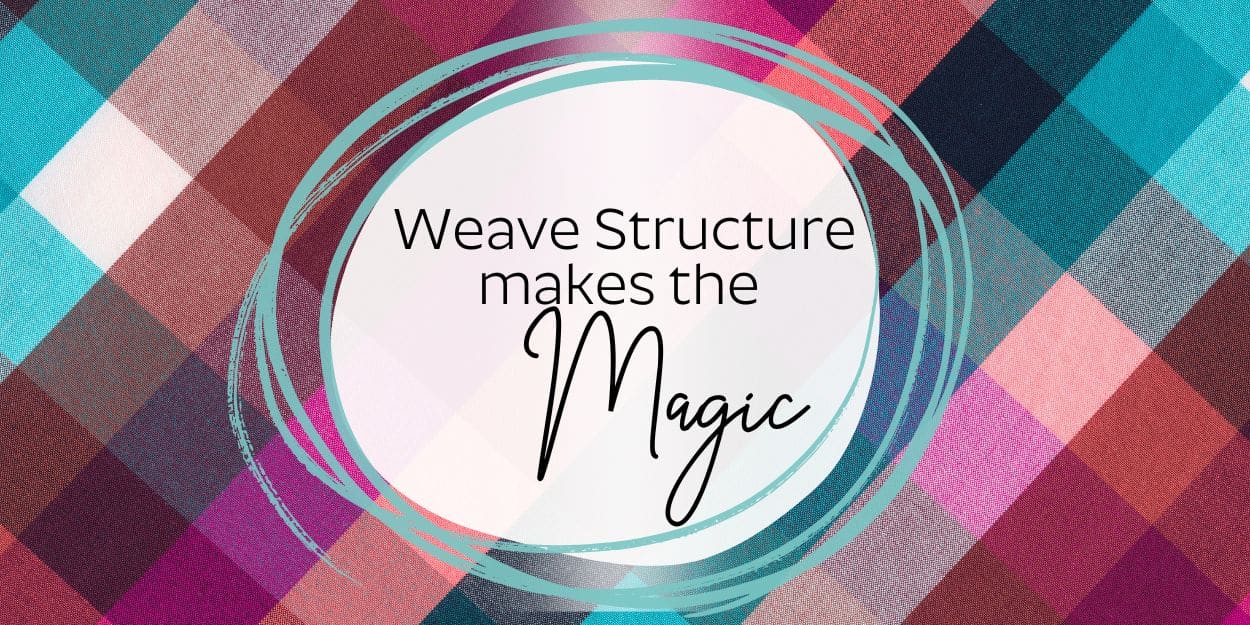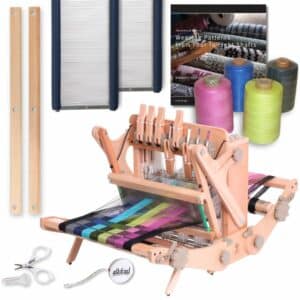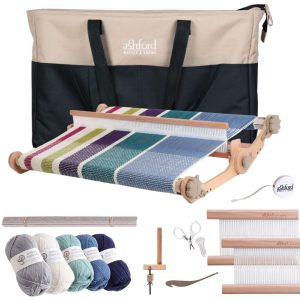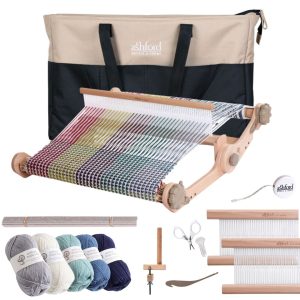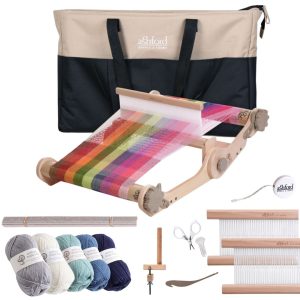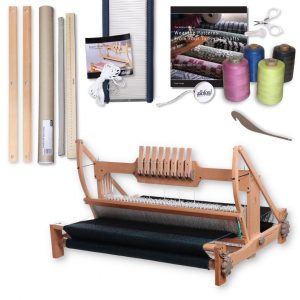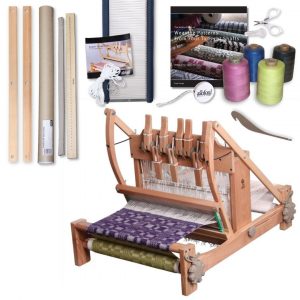-
×
Ashford Book of Weaving Patterns from Four to Eight Shafts - Elsa Krogh - English
6 × $38.50 -
×
Ashford Book of Needle Felting - Barbara Allen - English
13 × $35.00 -
×
Ashford Ball Winder
1 × $289.00 -
×
Yarn Dispenser - Natural
4 × $59.95 -
×
Knitting Bag - Doctor Style - Bloom
4 × $94.95 -
×
Ashford Handcream - 100gm Tub
4 × $17.00 -
×
Four Shaft Table Loom - 60cm - with shuttle race
3 × $1,260.00 -
×
Knit Blockers - KnitPro Mindful Collection
1 × $35.90 -
×
Symfonie Interchangeable Circular Needles- Deluxe Set
2 × $159.50 -
×
Crochet Hook Set - Tunisian - Japanese Bamboo
4 × $153.95 -
×
Rigid Heddle Loom Table Stand
3 × $125.00 -
×
Crochet Hook Set - KnitPro Wave - Pink
3 × $54.50 -
×
Stainless Steel Reed for Katie Loom 30 cm / 12" - 10 DPI
3 × $72.00 -
×
40cm Rigid Heddle Loom - includes second heddle kit
4 × $335.00 -
×
80cm Rigid Heddle Loom - includes second heddle kit
2 × $399.00 -
×
7 Colour Corriedale Wool 100gm Bags - Summer
1 × $14.00 -
×
Needle Felting Kit Christmas Special
2 × $29.00 -
×
7 Colour Corriedale Wool 100gm Bags - Fluro
1 × $14.00 -
×
SampleIt Loom 40cm / 16" - with built-in second heddle kit
4 × $255.00 -
×
7 Colour Corriedale Wool 100gm Bags - Spring
1 × $14.00 -
×
Felting Needle Punch Student - Includes 3 medium needles
12 × $15.50 -
×
Needle Felting Kit - Bugs
4 × $10.90 -
×
Weaving Frame Small
4 × $49.50 -
×
Learn to Card on the Wild Carder
3 × $0.00 -
×
Needle Felting Starter Kit
7 × $74.50 -
×
7 Colour Corriedale Wool 100gm Bags - Furry Friends
1 × $14.00 -
×
White Polwarth Sliver 500gm (21 micron)
3 × $48.95 -
×
Learn Wet Felting
1 × $0.00 -
×
White Silk/Merino blend - 30% Mulberry Silk 70% Merino 19 micron - 500gm
3 × $80.50 -
×
Lyocell Fibre - 1kg Bag
5 × $92.50 -
×
Mulberry Silk Sliver - 1kg Bag
2 × $204.50 -
×
Linen Fibre - 1kg Bag
5 × $109.50 -
×
Merino Lyocell Blend 1 kg
6 × $124.90 -
×
Inklette Loom Complete Kit
4 × $235.00 -
×
7 Colour Corriedale Wool 100gm Bags - Pastels
1 × $14.00 -
×
Felting Needle Punch - Includes 5 medium needles
13 × $39.00 -
×
Weaving Frame Large
3 × $66.00 -
×
Drum Carder Cleaning Brush Lacquered
8 × $38.50 -
×
100% White Alpaca Sliver - 100gm Bag (21.5 micron)
6 × $18.00 -
×
Tussah Silk Sliver - 1kg Bag
7 × $204.50 -
×
Angelina Fibre Gold - 10gm Bag
5 × $7.50 -
×
Needle Felting Kit - Beagle
7 × $30.90 -
×
Handcard Fine 108 PPSI 220 x 125mm
11 × $91.50 -
×
Clamps for Ashford Products - Packaged 2pc
8 × $18.00 -
×
Alpaca Merino - 100gm Bag - Granite
1 × $19.00 -
×
Needle Felting Kit - Pete the Penguin
2 × $17.50 -
×
Needle Felting Kit - Theodore the Tui
4 × $16.50 -
×
Silk Merino 100gm Bag - Flamingo
1 × $18.50 -
×
Mulberry Silk Sliver - 100gm Bag
5 × $23.50 -
×
Handcard Standard 72 PPSI 220 x 125mm
10 × $89.50 -
×
Corriedale Sliver Sample Pack 1 - Lights
7 × $110.00 -
×
Stainless Steel Reed for Katie Loom 30 cm / 12" - 12 DPI
4 × $79.00 -
×
Stainless Steel Reed for Katie Loom 30 cm / 12" - 8 DPI
1 × $72.00 -
×
Vari Dent Reed Kit - 40cm / 16" for RH400 and SL40
1 × $105.50 -
×
Vari Dent Reed Kit - 30cm / 12" FOR KL3
2 × $105.00 -
×
Corriedale Silver Sample Pack 2 - Brights
10 × $110.00 -
×
Lyocell Fibre - 100gm Bag
3 × $14.50 -
×
Merino Lyocell Blend - 100gm Bag
6 × $17.50 -
×
100% White Alpaca Sliver 1kg (21.5 micron)
5 × $155.00 -
×
Pattern - Mackenzie Yarn - Ribbed Twist Singlet
2 × $8.90 -
×
Pattern - Mackenzie Yarn - Ribbed Singlet
1 × $8.90 -
×
Pattern - Mackenzie Yarn - Hat Booties and Mittens
3 × $8.90 -
×
Pattern - Mackenzie Yarn - Beanie and T-Bar Shoes
2 × $8.90 -
×
Handcard Fine Small 108 PPSI 185 x 80mm
3 × $74.50 -
×
Ashford Dye Pack 12 Colours
1 × $99.90 -
×
Ashford Drum Carder Fine - 72 PPSI - 20cm / 8" Width
7 × $865.00 -
×
Ashford Drum Carder Packer Brush Kit
8 × $82.50 -
×
Ashford Drum Carder Wide - 72 PPSI - 30cm / 12" Width
5 × $985.00 -
×
Ashford e-Spinner 3 - Includes carry bag, foot switch and fibre
3 × $879.00 -
×
Introduction to Spinning Kit - Drop Spindle, Fibre & Instructions
1 × $89.90 -
×
Ashford Book of Hand Spinning - Jo Reeve - English
10 × $38.00 -
×
Needle Felting Kit - Flowers
3 × $10.90 -
×
Stainless Steel Reed for Katie Loom 30 cm / 12" - 16 DPI
3 × $79.00 -
×
Warping Thread Weights - Packaged 2pc
1 × $33.50 -
×
Stainless Steel Reed for Katie Loom 30 cm / 12" - 6 DPI
3 × $72.00 -
×
Rigid Heddle Loom - 60cm -The Complete Learners Weaving Kit
2 × $585.00 -
×
Wild Drum Carder - 72 PPSI - 10cm / 4" Width
5 × $749.00 -
×
Tussah Silk Sliver 100gm Bag
4 × $23.50 -
×
Pattern - 8 Ply and 12 Ply - Lace and Cable Blankets
1 × $8.90 -
×
Pattern - 8Ply Yarn - Double Moss Stitch Vest
2 × $8.90 -
×
Pattern - 12ply Yarn - Striped Beanie and Scarf
2 × $8.90 -
×
Pattern - 8ply - Lace Cowl and Scarf
1 × $8.90 -
×
Pattern - 12ply Yarn - Lace and Cable Cowls
2 × $8.90 -
×
Pattern - 8ply and 12ply Yarn - Plain Cowls
2 × $8.90 -
×
Pattern - 8ply Yarn - Cable Cowl and Scarf
1 × $8.90 -
×
Pattern - Fair Isle Hat and Cowl
3 × $8.90 -
×
White Merino Sliver - 100gm Bag (19 micron )
2 × $16.00 -
×
Blending Board 108 PPSI
9 × $279.00 -
×
Blending Board Brush Lacquered
8 × $34.50 -
×
White Silk/Merino blend - 30% Mulberry Silk 70% Merino 19 micron - 100gm Bag
2 × $21.00 -
×
Needle Felting Kit - Sheep
4 × $17.50 -
×
Flick Carder 72 PPSI - long handle
3 × $29.90 -
×
Needle Felting Kit - Owl
1 × $18.00 -
×
Needle Felting Kit - Pauly the Pukeko
2 × $18.00 -
×
Needle Felting Kit - Rooster
5 × $10.90 -
×
Needle Felting Refill Kit
1 × $69.00 -
×
Needle Felting Kit - Penny the Platypus
1 × $18.50 -
×
Needle Felting Kit - Freddy the Frog
1 × $18.50 -
×
Needle Felting Kit - Kate the Koala
1 × $18.50 -
×
Needle Felting Kit - Halloween
1 × $29.90 -
×
Needle Felting Kit - Turkey
1 × $18.00 -
×
Pattern - Opal Yarn - Pixie Hat
2 × $8.90 -
×
Pattern - Opal Yarn - Mittens
1 × $8.90 -
×
Pattern - Opal Yarn - Gloves
1 × $8.90 -
×
Pattern - Opal Yarn - Baby Jersey
2 × $8.90 -
×
Ashford Book of Carding - Jo Reeve - English
7 × $37.50 -
×
Ashford Protein & Wool Dye - Primary Colours Collection
1 × $27.50 -
×
Ashford 100% NZ Wool Double Knit Cone
1 × $85.00 -
×
Ashford Small Handcarders
8 × $71.50 -
×
Needle Felting Foam
6 × $13.00 -
×
Awl - Doffer for All Ashford Drum Carders
7 × $31.00 -
×
Drive Band for Drum Carders - 976 x 6mm Polycord
4 × $15.50 -
×
Inkle Loom includes Shuttle and clamp - warp 2.8m / 110"
3 × $148.50 -
×
Weaving Starter Kit Monochrome
1 × $89.95 -
×
Inklette Loom includes Shuttle - warp 1.8m / 72"
3 × $86.50 -
×
Weaving Starter Kit Brights
3 × $89.95 -
×
Rigid Heddle Loom - 40cm - The Complete Learners Weaving Kit
8 × $535.00 -
×
Vari Dent Reed Kit - 50cm / 20" FOR KL5
1 × $125.00 -
×
Vari Dent Reed Kit - 80cm / 32" for RH800
1 × $139.50 -
×
Vari Dent Reed Kit - 70cm / 28" FOR KL7
1 × $139.00 -
×
Ashford Drum Carder Super Fine - 120 PPSI - 20cm / 8" Width
5 × $879.00 -
×
Sixteen Shaft 61cm / 24" Table Loom
2 × $2,050.00 -
×
Belt Shuttle for Inkle Loom - 18cm / 7"
3 × $14.85 -
×
Vari Dent Reed Kit - 120cm / 48" for RH1200
1 × $224.50 -
×
Vari Dent Reed Kit - 60cm / 24" for RH600
1 × $129.50 -
×
Ashford 60cm Rigid Heddle Loom
2 × $369.00 -
×
120cm Rigid Heddle Loom - includes second heddle kit
2 × $555.00 -
×
Paper Bobbins for Boat Shuttles - Packaged 10pc
1 × $15.90 -
×
Rigid Heddle Loom - 80cm -The Complete Learners Weaving Kit
4 × $630.00 -
×
Rigid Heddle Loom Stand for 120cm
1 × $345.00 -
×
Rigid Heddle Warp Pegs - Packaged 14pc
1 × $14.95 -
×
Rigid Heddle Loom Stand
1 × $230.00 -
×
Angelina Fibre Silver - 10gm Bag
3 × $7.50 -
×
Jack Loom Eight Shaft 97cm / 38" Floor Loom
2 × $3,760.00 -
×
Pattern - Mackenzie Yarn - Cable Blanket
1 × $8.90 -
×
50cm Knitters Loom with carry bag - includes second heddle kit
4 × $455.00 -
×
30cm Knitters Loom with carry bag - includes second heddle kit
1 × $415.00 -
×
Knitters Loom Stand
2 × $257.00 -
×
Knitters Loom Stand Support Brace Kit
2 × $51.50 -
×
Brooklyn Four Shaft Weaving Loom
2 × $830.00 -
×
Katie Eight Shaft 30cm Table Loom with Carry Bag
2 × $1,440.00 -
×
Ashford Eight Shaft Table Loom - 60cm(24") with shuttle race
3 × $1,330.00 -
×
Sock Yarn
1 × $16.95 -
×
Signature Ball Winder
4 × $235.00 -
×
Triple Knit Yarn Packs - 500gm Multicolour Bright & Bold
2 × $69.75 -
×
Country Spinner 2 Double Treadle - Ashford - Lacquered
1 × $1,189.00 -
×
20% White Silk / 30% Alpaca / 50% Merino Blend Sliver / kg
5 × $164.00 -
×
Elizabeth 30" Spinning Wheel - Ashford
1 × $1,890.00 -
×
Sliding Hook Flyer Joy Freedom Kit with Jumbo bobbin Lacquered
1 × $129.50 -
×
White Silk / Alpaca / Merino Blend Sliver - 100gm Bag
3 × $21.00 -
×
Needle Felting Kit - Kelvin the Kiwi
3 × $17.50 -
×
The Ashford Complete SampleIt Weaving Kit
3 × $370.00 -
×
SampleIt Loom Stand - Variable Size
3 × $155.00 -
×
SampleIt Loom Complete Kit - 25cm
3 × $310.00 -
×
Too Cute Violet Amigurumi Crochet Kit
1 × $36.95 -
×
Crochet Hook Set - KnitPro Wave - Green
2 × $54.50 -
×
Crochet Hook Set- Zing Single Ended
4 × $44.95 -
×
Mary-Claire Ballet Dancer - Amigurumi Crochet Kit
1 × $39.95 -
×
Yarn Gauge
2 × $9.00 -
×
Ashford Merino 4Ply Yarn - Shadow
1 × $9.60 -
×
35cm Knitting Needles Set - Zing Metal
2 × $64.95 -
×
Ashford Bamboo Double Pointed Knitting Needles - 3.5
1 × $9.05 -
×
Ashford Merino 4Ply Yarn - Peacock
1 × $9.60 -
×
Double Knit Yarn - 100gm - Coral
1 × $13.95 -
×
Weaving Needles - Packaged 3pc
1 × $30.00 -
×
SampleIt Loom Complete Kit - 40cm
3 × $329.00 -
×
Felting Needles - pack of 10 - Fine 40 Gauge
1 × $17.00 -
×
Ball Winder - Natural
2 × $159.95 -
×
Pattern - Ashford DK Yarn - Fair Isle Yoke Sweater
5 × $8.90 -
×
Warping Mill - 15m / 50'
2 × $299.00 -
×
Texsolv Heddles Green 22cm / 8.6" - all Ashford Table Looms - 320 Pieces
2 × $71.50 -
×
Ashford Triple Knit 12Ply Yarn - Ballet
1 × $13.95 -
×
Knitting Bag - Duffle Style - Snug
2 × $79.95 -
×
Vari Dent Reed Kit - 25cm / 10" for SL25
1 × $95.50 -
×
25cm SampleIt Loom with built-in second heddle kit
3 × $225.00 -
×
Corriedale Sliver Sample Pack 3 - Darks
4 × $110.00 -
×
Traditional Spinning Wheel Kit - Ashford
1 × $1,135.00 -
×
e-Ball Winder
1 × $775.00 -
×
Tensioned Lazy Kate
1 × $89.00 -
×
Tapestry Loom Warping Thread 100% cotton - 200gm cones
3 × $18.50 -
×
7 Colour Corriedale Wool 100gm Bags - Rainbow Brights
1 × $14.00 -
×
Handi Handles 65cm for KL/KTL/SL
1 × $37.50 -
×
Aluminum Stitch Holder
1 × $5.15 -
×
Warp Stick Ties - Packaged 2 sets (12 Ties)
1 × $5.90 -
×
Triple Knit Yarn Packs - 500gm Multicolour Ocean Dreams
2 × $182,045,375,662,305.59 -
×
Stainless Steel Reed 6, 8, 10, 12, 16 DPI (12.5cm / 5" wide - Price per inch - end to end including caps)
1 × $7.50 -
×
Ashford Merino 4Ply Yarn - Ballet
1 × $9.60 -
×
Texsolv Heddles 100 Pink 26.8cm / 10.5" - all Ashford Jack Looms
1 × $27.50 -
×
70cm Knitters Loom with carry bag - includes second heddle kit
2 × $545.00 -
×
Ashford Little Scissors - 10pc Packaged
1 × $19.90 -
×
Introduction to Dyeing Kit
1 × $66.50 -
×
Ashford Canvas Carry Bag
1 × $18.50 -
×
Kiwi Super Flyer Kit with 3 Kiwi Super Flyer Bobbins and Lazy Kate - Lacquered
1 × $460.00 -
×
Sliding Hook Flyer Kiwi with Sliding Hook Flyer bobbin
1 × $166.00 -
×
Knitters Loom Second Heddle Kit
1 × $56.50 -
×
High Speed Double Drive Whorl 3 speed
1 × $34.50 -
×
Three Speed Whorl for all Double Drive wheels and Kiwi 3
1 × $24.50 -
×
Brake Band Set Small - for Ashford eSpinner
1 × $5.30 -
×
Hand Carder Cotton
1 × $99.90 -
×
Knitters Loom Carry Bag - 70cm
1 × $123.00 -
×
Nylon Brake Band
1 × $3.50 -
×
Nylon Retaining Clip
1 × $2.50 -
×
Threading Hook and Tape
1 × $2.90 -
×
Linen Fibre - 100gm Bag
1 × $14.00 -
×
Needle Felting Kit - Butterflies
3 × $25.90 -
×
Triple Knit Yarn Packs - 500gm Multicolour Pretty Days
1 × $69.75 -
×
Yoga Yarn 8/2 Core Spun Cotton 200gm cone - Chilli Pepper
1 × $29.50 -
×
Learn to Weave on the Inkle Loom
1 × $0.00 -
×
Warping Frame - Large 11m / 37'
1 × $178.50 -
×
Ashford Eight Shaft Table Loom - 40cm(16") with shuttle race
1 × $1,230.00 -
×
Ashford Book of Rigid Heddle Weaving - Rowena Hart - English
2 × $35.00 -
×
Introduction to Dyeing Gift Pack
1 × $85.00 -
×
Drive Band for Kiwi Spinning Wheel - 1540 x 3.2mm Polycord
1 × $17.50 -
×
Kiwi High Speed Kit
1 × $42.00 -
×
Kiwi 3 Spinning Wheel Carry Bag
1 × $185.00 -
×
Joy Spinning Wheel Carry Bag
1 × $145.00
It’s often said, weaving is like painting with thread! You take vertical threads (called the warp) and horizontal threads (called the weft) and weave them together to create all sorts of amazing fabrics, like clothes, blankets, and even baskets. It’s like you’re turning thread into a beautiful work of art.
We don’t have a time machine to see exactly when it all started, but archaeologists guess that weaving looms showed up on the scene around a whopping 8,000 to 12,000 years ago! That’s way older than those amazing pyramids in Egypt. Think about it, people were whipping up comfy clothes and useful tools with looms thousands of years before us!
What does weaving structure mean?
Weaving structure is like a secret handshake between threads! It’s all about how the vertical threads (warp) and horizontal threads (weft) criss-cross to create different fabrics. This handshake affects how the fabric looks and feels, from how it drapes to how strong it is.
Ever wonder why some fabrics are soft and flowy, while others are sturdy and wrinkle-resistant? It’s all thanks to the weave! Imagine wanting to make a comfy cushion – you’d want a weave that’s soft and drapes nicely. But for a sturdy chair seat, you’d pick a different handshake that makes a stronger fabric.
Understanding weave structures is like learning a new language for fabric. By knowing how the warp and weft interact (think over and under!), you can choose the perfect “handshake” for your project. It’s all about form following function – pick the weave that gives you the fabric features you want! So next time you’re lost in the world of textiles, remember, the weave structure is the secret code behind the fabric’s magic!
Here’s a peek at some of the most popular weaving structures used today:
- Plain weave: This is the basic handshake, where one thread goes over and then under the other, like a checkerboard. It’s strong and even, perfect for everyday fabrics like shirts and tablecloths.
- Twill weave: This handshake is a bit more diagonal. You go over a couple threads, then under one, creating a diagonal line across your fabric. It’s great for adding texture and a touch of fancy to clothes or bags.
- Satin weave: This handshake is all about showing off! One thread goes over many threads, creating a smooth, almost shiny surface. It’s like royalty for fabrics, perfect for dressy clothes or luxurious scarves.
These are just a few of the many weaving handshakes out there! Weavers can mix and match these basics, or even invent their own secret combinations, to create endless patterns and textures in their fabrics.
What is the right weave type for my project?
Picking the perfect weave structure for your project is like choosing the right puzzle piece – you want it to fit just right! Here are some fun things to consider:
- Project Power: What are you making? Think about how much wear and tear it will face. For everyday clothes like shirts, a strong and stable weave like plain weave is a great choice. But for something that needs to be super tough, like work pants, twill weave will be your champion.
- Feeling Fancy? Is this project for lounging around or turning heads? Satin weave will add a luxurious touch to a dress, while a twill weave can add a touch of cool to a casual outfit. Plain weave keeps things simple and classic.
- Fabric Flow: How do you want your creation to move? Satin weave will drape beautifully, perfect for flowy dresses. Plain weave offers a more structured drape, great for crisp tablecloths. Think about the shape you want and choose a weave that will complement it.
- Let’s Get Colourful! Some weaves, like plain weave, have a smooth surface that makes them perfect for showing off bold colours and patterns. Other weaves might have more texture that can hide busier patterns a bit. Consider the overall look you’re going for and pick a weave that will highlight your fabric’s best features.
Don’t be afraid to experiment! Weaving is all about getting creative. There are tons of resources online and in libraries that show you different weave structures and the fabrics they create. You can even swatch out some practice pieces with different weaves to see how they look and feel before you dive into your main project.
Plain Weave
Plain weave is like the trusty friend of the weaving world! It’s the most common type of weave because it’s got so many perks:
- Strong and Steady: Plain weave fabrics are built to last. The criss-cross pattern of the threads makes them super durable, perfect for everyday clothes like shirts and skirts that you wear all the time.
- Easy Does It: Since it’s the most basic weave, plain weave is a breeze to work with, even for beginners. This makes it a favourite for sewing projects and all sorts of crafts.
- Show Your True Colours: Plain weave fabrics have a smooth surface, which means they take dye and prints beautifully. So, whether you love bold patterns or classic solids, plain weave lets your creativity shine.
- Breathable Buddies: The space between the threads allows for air to flow through, making plain weave fabrics nice and comfortable to wear, especially in warmer weather.
You’ll find plain weave fabric used in everything from comfy shirts and bedsheets to crisp tablecloths and sturdy bags.
Twill Weave
Twill weave is like the coolest kid on the weaving block! It’s got that special something that makes it stand out from the crowd. Here’s what makes twill so awesome:
- Durable Dude: Just like a good pair of jeans, twill weave is tough and can handle wear and tear. The diagonal weave creates a strong fabric that’s perfect for clothes like pants, jackets, and even workwear.
- Texture Time: Twill weave isn’t just about function; it’s got style too! The diagonal lines add a unique texture that can look dressy or casual depending on the fabric. It gives clothes a bit of an edge and makes them visually interesting.
- Wrinkle Resist Champion: Twill weave is a champ at hiding wrinkles. That diagonal weave makes it a bit more forgiving than plain weave, so you can look sharp without constant ironing (bonus!).
- Versatility is King: Twill isn’t just for clothes! Because it’s strong and stylish, you’ll find twill weave in all sorts of things, from sturdy bags and backpacks to comfy bed sheets and even upholstery fabrics. It’s a true all-rounder!
So, next time you see those cool diagonal lines on your jeans or a bag, you’ll know it’s the work of the amazing twill weave! It’s strong, stylish, and perfect for tons of uses.
Satin Weave
Satin weave is the red carpet star of weaving! It’s all about luxury and looking absolutely stunning. Here’s what makes satin such a showstopper:
- Smooth Operator: Satin weave boasts the smoothest, most luxurious surface you can imagine. One thread floats over many others, creating a fabric that feels oh-so-soft and almost slippery against your skin. It’s pure indulgence!
- Shine Bright Like a Diamond: Satin’s secret weapon is its incredible shine. The way the light reflects off the smooth surface makes it look almost luminous. Perfect for adding a touch of glamour to dresses, lingerie, or even fancy pillowcases.
- Drape Dream: Satin is a master of graceful movement. Because it’s so smooth, it drapes beautifully, creating elegant folds and flowing shapes. Imagine a flowing evening gown – that’s the magic of satin weave!
Of course, with all this luxury comes a bit of a trade-off. Satin can be delicate and prone to snags, so it might not be the best choice for your everyday jeans. But for those special occasions where you want to feel like a million bucks, satin weave is the way to go! You’ll find it in stunning dresses, glamorous lingerie, and even luxurious scarves that add a touch of elegance to any outfit.
So, you’ve unlocked the secrets of weave structure! Now you can see fabric with a whole new understanding. Remember, weave structure is like a secret handshake between threads, dictating how a fabric feels, drapes, and even reflects light. By understanding the way warp and weft interact, you can choose the perfect weave for your project, whether you need something soft and flowy for a luxurious scarf or strong and sturdy for a pair of everyday jeans.
And if you want to take it one step further you can start to play around with shuttles such as the Ashford Wavy Shuttle. With this newfound knowledge, you’re well on your way to becoming a fabric master and creating your own textile masterpieces!
Learn More About Weaving Here:
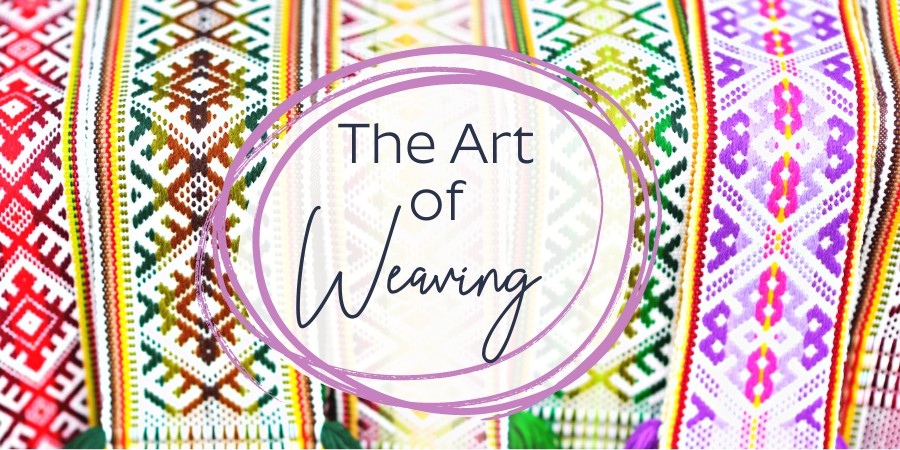
Whether you’re a beginner looking to explore a new hobby or an experienced weaver wanting to take your skills to the next level, a weaving loom is an essential tool in your creative journey. READ IT HERE
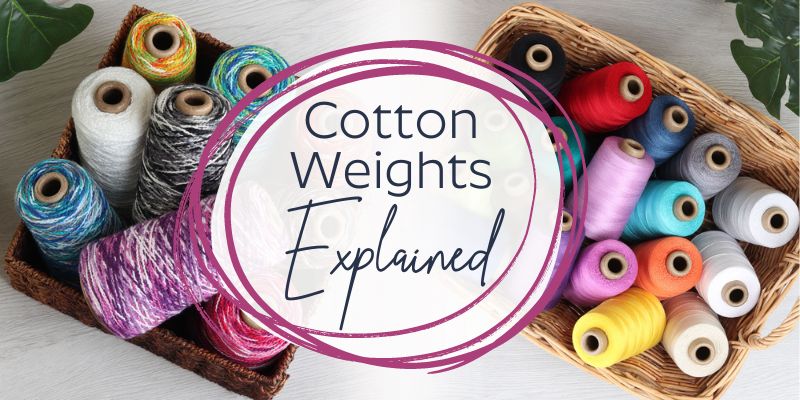
Cotton is known for its softness and breathability. But have you ever wondered what those numbers like 10/2 or 8/2 mean when referring to cotton? In this guide, we’ll explain the different cotton weights READ IT HERE
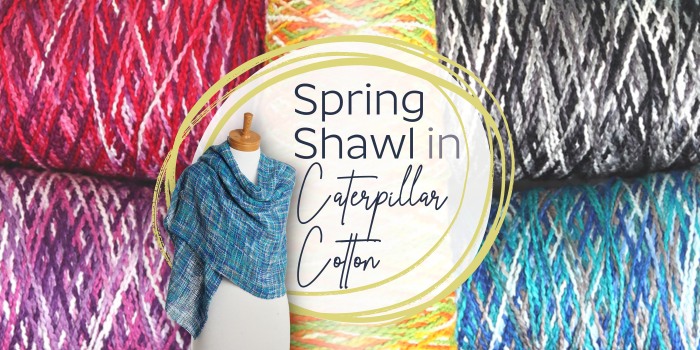
Weave a Beautiful Shawl. – an elegant, lightweight shawl that’ll elevate your style effortlessly. Crafted from just one cone of Ashfords Caterpillar cotton, this drapey masterpiece is a celebration of simplicity and beauty. READ IT HERE
-
Ashford Eight Shaft Table Loom – 60cm(24″) with shuttle race$1,330.00 inc GST
-
Ashford Eight Shaft Table Loom – 40cm(16″) with shuttle race$1,230.00 inc GST
-
Katie Eight Shaft 30cm Table Loom Weavers Kit$1,715.00 inc GST
-
Brooklyn Four Shaft Weaving Loom$830.00 inc GST
-
Weaving Kit – 70cm Ashford Knitters Loom$655.00 inc GST
-
Weaving Kit – 50cm Ashford Knitters Loom$579.00 inc GST
-
Weaving Kit – 30cm Ashford Knitters Loom$525.00 inc GST
-
8 Shaft Table Weaving Loom Kit – 80cm$1,690.00 inc GST
-
Weaving Loom Kit – 61cm Eight Shaft Table Loom$1,575.00 inc GST

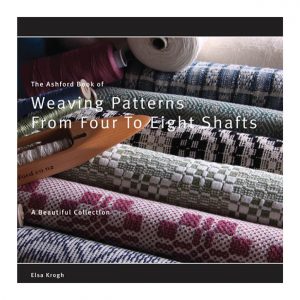 Ashford Book of Weaving Patterns from Four to Eight Shafts - Elsa Krogh - English
Ashford Book of Weaving Patterns from Four to Eight Shafts - Elsa Krogh - English 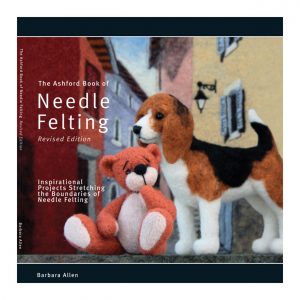 Ashford Book of Needle Felting - Barbara Allen - English
Ashford Book of Needle Felting - Barbara Allen - English 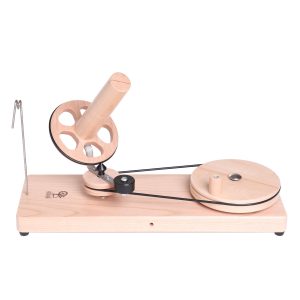 Ashford Ball Winder
Ashford Ball Winder 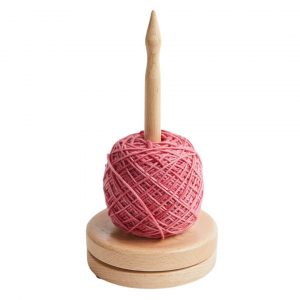 Yarn Dispenser - Natural
Yarn Dispenser - Natural 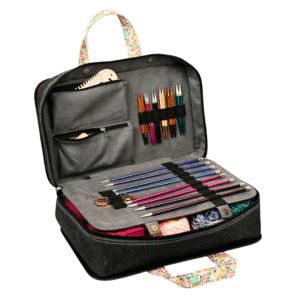 Knitting Bag - Doctor Style - Bloom
Knitting Bag - Doctor Style - Bloom 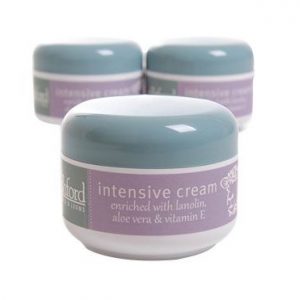 Ashford Handcream - 100gm Tub
Ashford Handcream - 100gm Tub 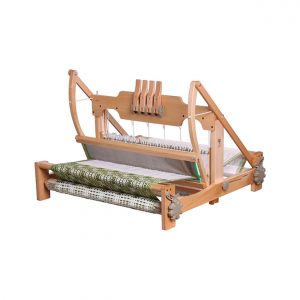 Four Shaft Table Loom - 60cm - with shuttle race
Four Shaft Table Loom - 60cm - with shuttle race 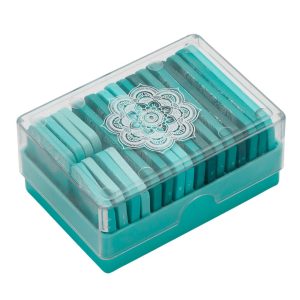 Knit Blockers - KnitPro Mindful Collection
Knit Blockers - KnitPro Mindful Collection 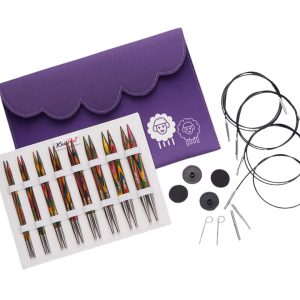 Symfonie Interchangeable Circular Needles- Deluxe Set
Symfonie Interchangeable Circular Needles- Deluxe Set 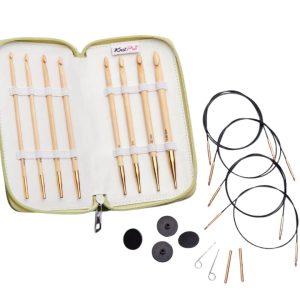 Crochet Hook Set - Tunisian - Japanese Bamboo
Crochet Hook Set - Tunisian - Japanese Bamboo 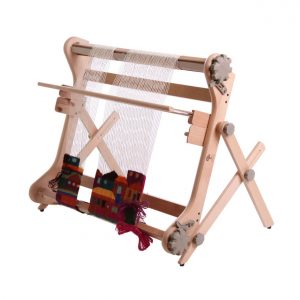 Rigid Heddle Loom Table Stand
Rigid Heddle Loom Table Stand 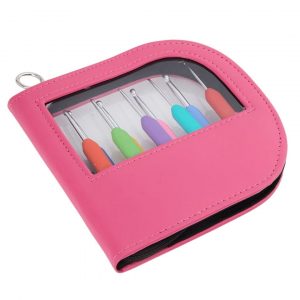 Crochet Hook Set - KnitPro Wave - Pink
Crochet Hook Set - KnitPro Wave - Pink 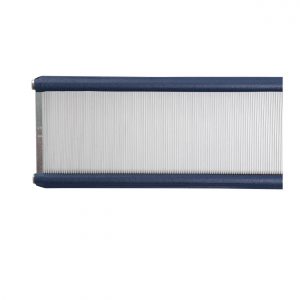 Stainless Steel Reed for Katie Loom 30 cm / 12" - 10 DPI
Stainless Steel Reed for Katie Loom 30 cm / 12" - 10 DPI 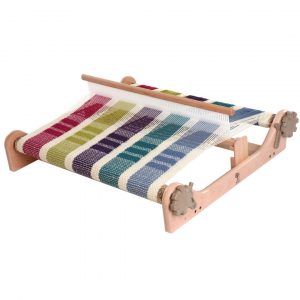 40cm Rigid Heddle Loom - includes second heddle kit
40cm Rigid Heddle Loom - includes second heddle kit 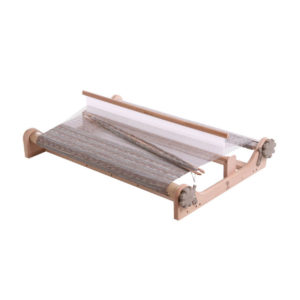 80cm Rigid Heddle Loom - includes second heddle kit
80cm Rigid Heddle Loom - includes second heddle kit 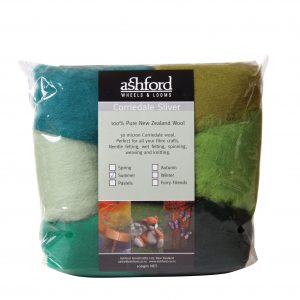 7 Colour Corriedale Wool 100gm Bags - Summer
7 Colour Corriedale Wool 100gm Bags - Summer 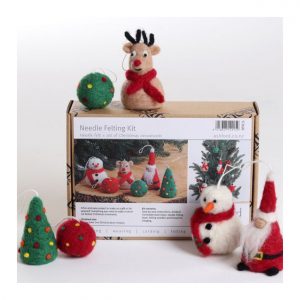 Needle Felting Kit Christmas Special
Needle Felting Kit Christmas Special 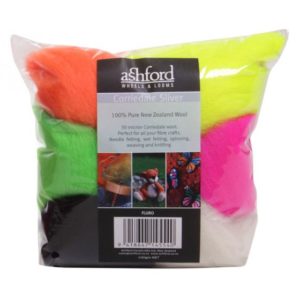 7 Colour Corriedale Wool 100gm Bags - Fluro
7 Colour Corriedale Wool 100gm Bags - Fluro 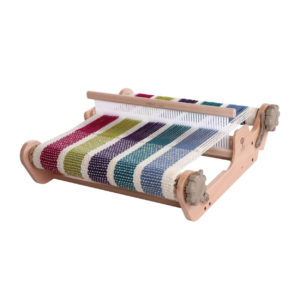 SampleIt Loom 40cm / 16" - with built-in second heddle kit
SampleIt Loom 40cm / 16" - with built-in second heddle kit 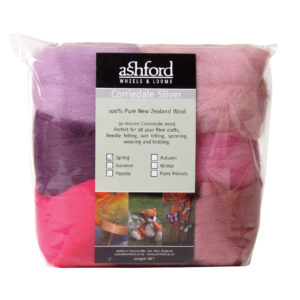 7 Colour Corriedale Wool 100gm Bags - Spring
7 Colour Corriedale Wool 100gm Bags - Spring 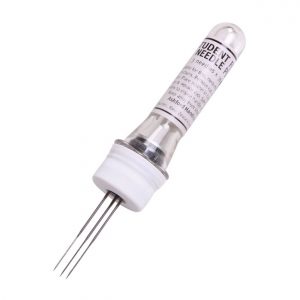 Felting Needle Punch Student - Includes 3 medium needles
Felting Needle Punch Student - Includes 3 medium needles 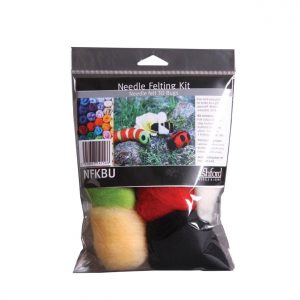 Needle Felting Kit - Bugs
Needle Felting Kit - Bugs 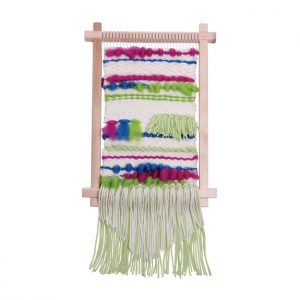 Weaving Frame Small
Weaving Frame Small 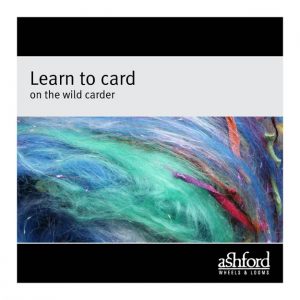 Learn to Card on the Wild Carder
Learn to Card on the Wild Carder 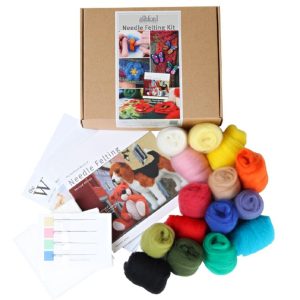 Needle Felting Starter Kit
Needle Felting Starter Kit 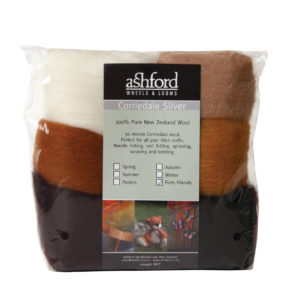 7 Colour Corriedale Wool 100gm Bags - Furry Friends
7 Colour Corriedale Wool 100gm Bags - Furry Friends 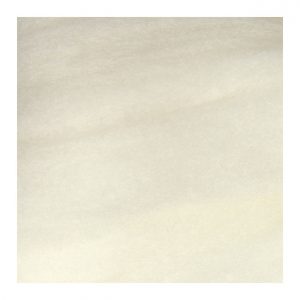 White Polwarth Sliver 500gm (21 micron)
White Polwarth Sliver 500gm (21 micron) 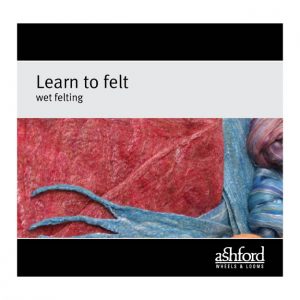 Learn Wet Felting
Learn Wet Felting 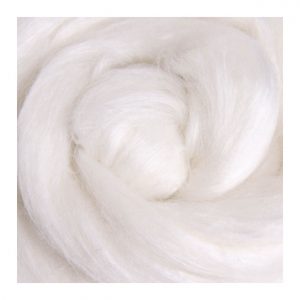 White Silk/Merino blend - 30% Mulberry Silk 70% Merino 19 micron - 500gm
White Silk/Merino blend - 30% Mulberry Silk 70% Merino 19 micron - 500gm 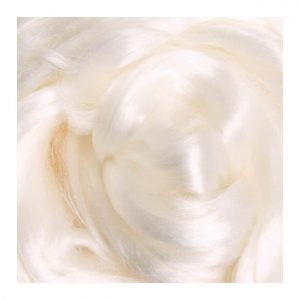 Lyocell Fibre - 1kg Bag
Lyocell Fibre - 1kg Bag 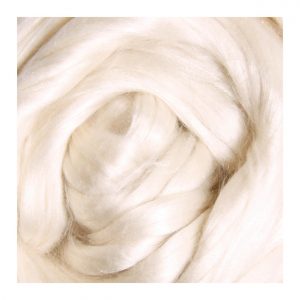 Mulberry Silk Sliver - 1kg Bag
Mulberry Silk Sliver - 1kg Bag 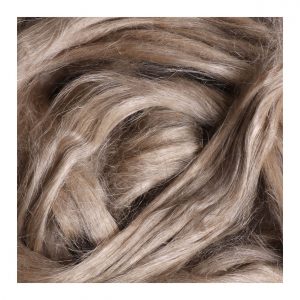 Linen Fibre - 1kg Bag
Linen Fibre - 1kg Bag 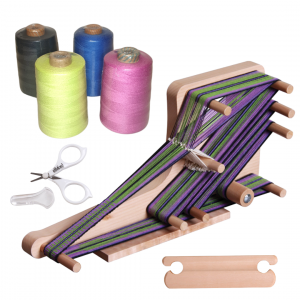 Inklette Loom Complete Kit
Inklette Loom Complete Kit 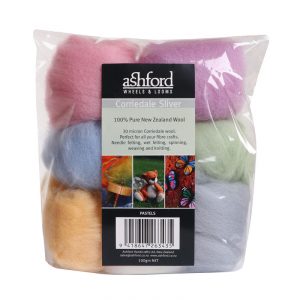 7 Colour Corriedale Wool 100gm Bags - Pastels
7 Colour Corriedale Wool 100gm Bags - Pastels 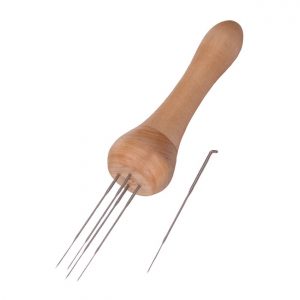 Felting Needle Punch - Includes 5 medium needles
Felting Needle Punch - Includes 5 medium needles 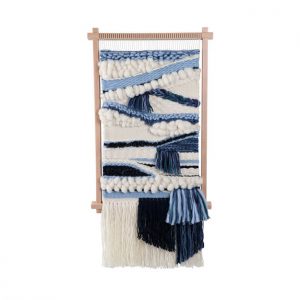 Weaving Frame Large
Weaving Frame Large 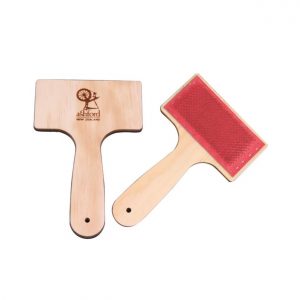 Drum Carder Cleaning Brush Lacquered
Drum Carder Cleaning Brush Lacquered 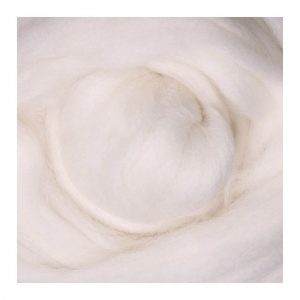 100% White Alpaca Sliver - 100gm Bag (21.5 micron)
100% White Alpaca Sliver - 100gm Bag (21.5 micron) 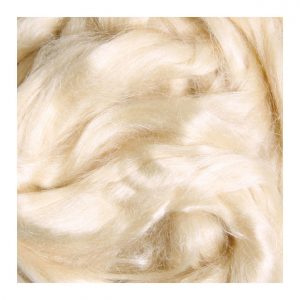 Tussah Silk Sliver - 1kg Bag
Tussah Silk Sliver - 1kg Bag 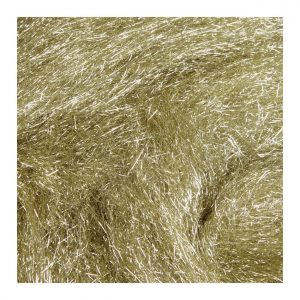 Angelina Fibre Gold - 10gm Bag
Angelina Fibre Gold - 10gm Bag 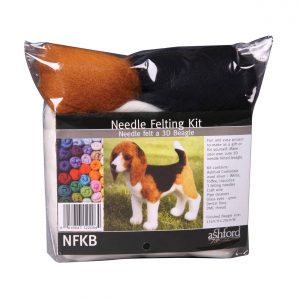 Needle Felting Kit - Beagle
Needle Felting Kit - Beagle 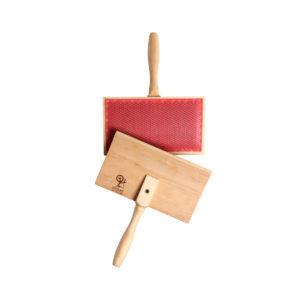 Handcard Fine 108 PPSI 220 x 125mm
Handcard Fine 108 PPSI 220 x 125mm 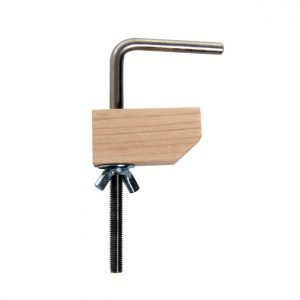 Clamps for Ashford Products - Packaged 2pc
Clamps for Ashford Products - Packaged 2pc 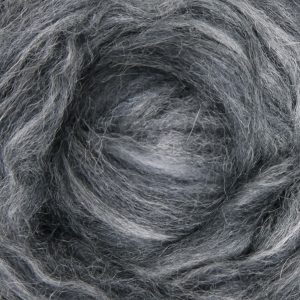 Alpaca Merino - 100gm Bag - Granite
Alpaca Merino - 100gm Bag - Granite 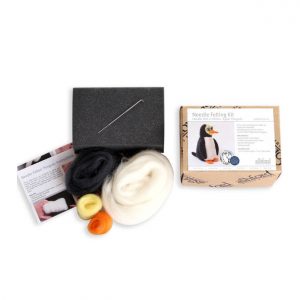 Needle Felting Kit - Pete the Penguin
Needle Felting Kit - Pete the Penguin 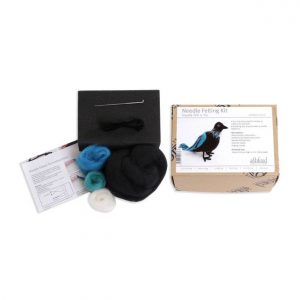 Needle Felting Kit - Theodore the Tui
Needle Felting Kit - Theodore the Tui 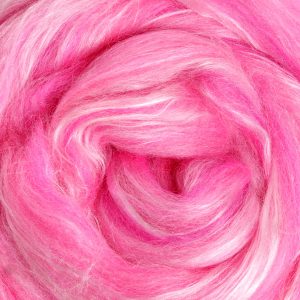 Silk Merino 100gm Bag - Flamingo
Silk Merino 100gm Bag - Flamingo 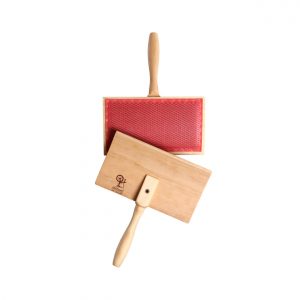 Handcard Standard 72 PPSI 220 x 125mm
Handcard Standard 72 PPSI 220 x 125mm 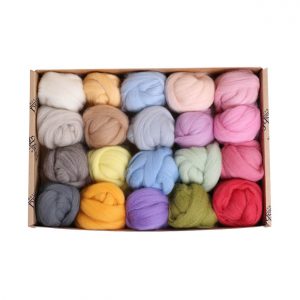 Corriedale Sliver Sample Pack 1 - Lights
Corriedale Sliver Sample Pack 1 - Lights 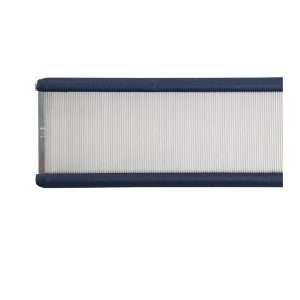 Stainless Steel Reed for Katie Loom 30 cm / 12" - 12 DPI
Stainless Steel Reed for Katie Loom 30 cm / 12" - 12 DPI 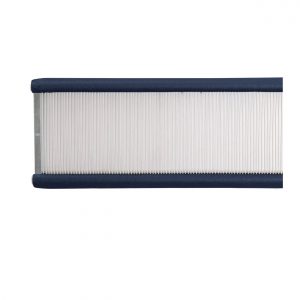 Stainless Steel Reed for Katie Loom 30 cm / 12" - 8 DPI
Stainless Steel Reed for Katie Loom 30 cm / 12" - 8 DPI 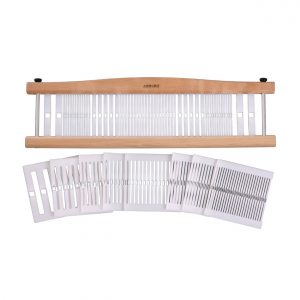 Vari Dent Reed Kit - 40cm / 16" for RH400 and SL40
Vari Dent Reed Kit - 40cm / 16" for RH400 and SL40 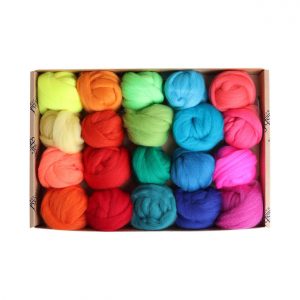 Corriedale Silver Sample Pack 2 - Brights
Corriedale Silver Sample Pack 2 - Brights 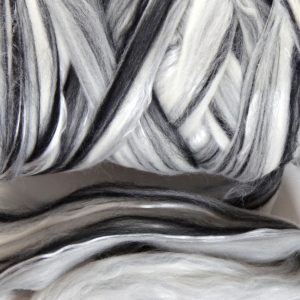 Merino Lyocell Blend - 100gm Bag
Merino Lyocell Blend - 100gm Bag 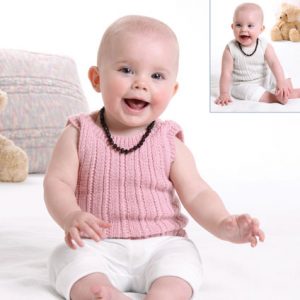 Pattern - Mackenzie Yarn - Ribbed Twist Singlet
Pattern - Mackenzie Yarn - Ribbed Twist Singlet 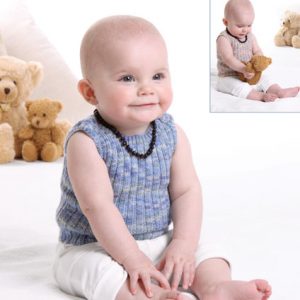 Pattern - Mackenzie Yarn - Ribbed Singlet
Pattern - Mackenzie Yarn - Ribbed Singlet  Pattern - Mackenzie Yarn - Hat Booties and Mittens
Pattern - Mackenzie Yarn - Hat Booties and Mittens  Pattern - Mackenzie Yarn - Beanie and T-Bar Shoes
Pattern - Mackenzie Yarn - Beanie and T-Bar Shoes 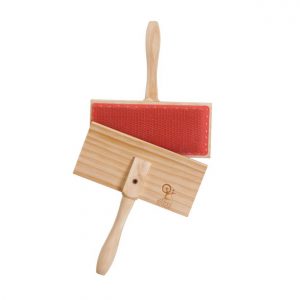 Handcard Fine Small 108 PPSI 185 x 80mm
Handcard Fine Small 108 PPSI 185 x 80mm 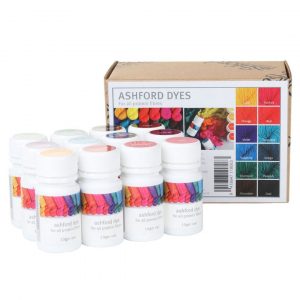 Ashford Dye Pack 12 Colours
Ashford Dye Pack 12 Colours 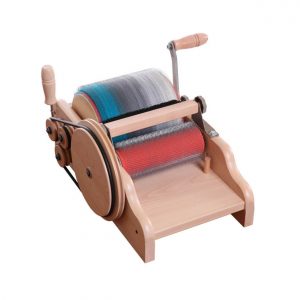 Ashford Drum Carder Fine - 72 PPSI - 20cm / 8" Width
Ashford Drum Carder Fine - 72 PPSI - 20cm / 8" Width 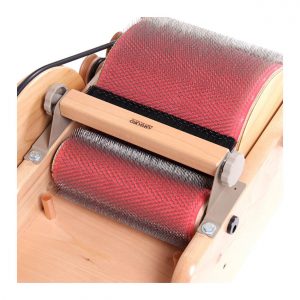 Ashford Drum Carder Packer Brush Kit
Ashford Drum Carder Packer Brush Kit 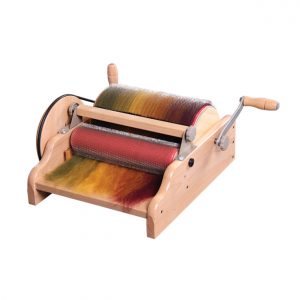 Ashford Drum Carder Wide - 72 PPSI - 30cm / 12" Width
Ashford Drum Carder Wide - 72 PPSI - 30cm / 12" Width 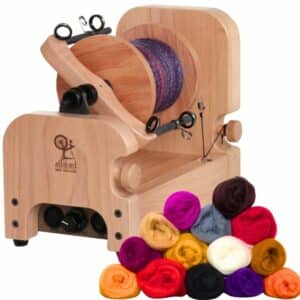 Ashford e-Spinner 3 - Includes carry bag, foot switch and fibre
Ashford e-Spinner 3 - Includes carry bag, foot switch and fibre 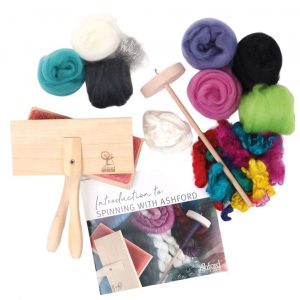 Introduction to Spinning Kit - Drop Spindle, Fibre & Instructions
Introduction to Spinning Kit - Drop Spindle, Fibre & Instructions 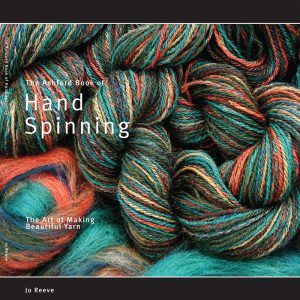 Ashford Book of Hand Spinning - Jo Reeve - English
Ashford Book of Hand Spinning - Jo Reeve - English 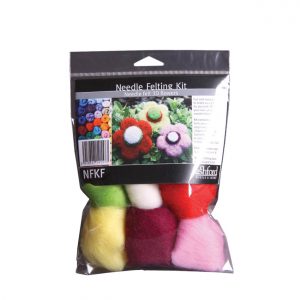 Needle Felting Kit - Flowers
Needle Felting Kit - Flowers 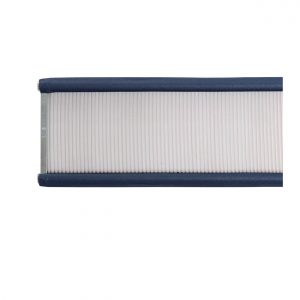 Stainless Steel Reed for Katie Loom 30 cm / 12" - 16 DPI
Stainless Steel Reed for Katie Loom 30 cm / 12" - 16 DPI 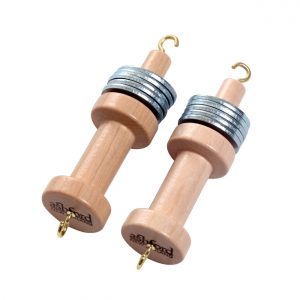 Warping Thread Weights - Packaged 2pc
Warping Thread Weights - Packaged 2pc 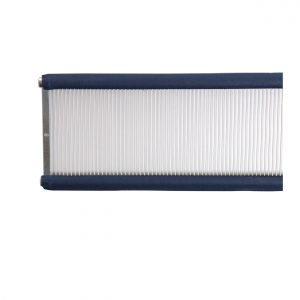 Stainless Steel Reed for Katie Loom 30 cm / 12" - 6 DPI
Stainless Steel Reed for Katie Loom 30 cm / 12" - 6 DPI 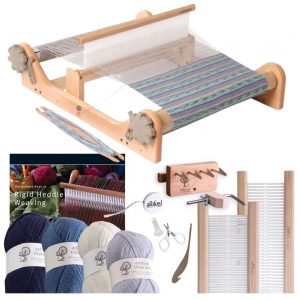 Rigid Heddle Loom - 60cm -The Complete Learners Weaving Kit
Rigid Heddle Loom - 60cm -The Complete Learners Weaving Kit 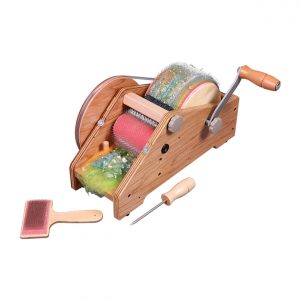 Wild Drum Carder - 72 PPSI - 10cm / 4" Width
Wild Drum Carder - 72 PPSI - 10cm / 4" Width 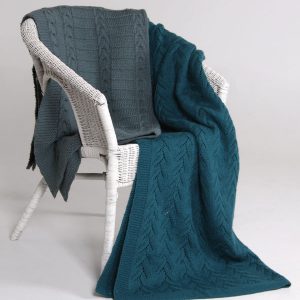 Pattern - 8 Ply and 12 Ply - Lace and Cable Blankets
Pattern - 8 Ply and 12 Ply - Lace and Cable Blankets 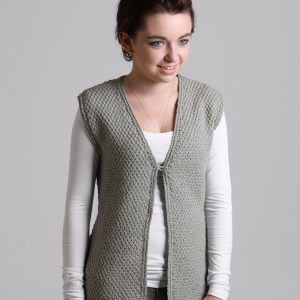 Pattern - 8Ply Yarn - Double Moss Stitch Vest
Pattern - 8Ply Yarn - Double Moss Stitch Vest 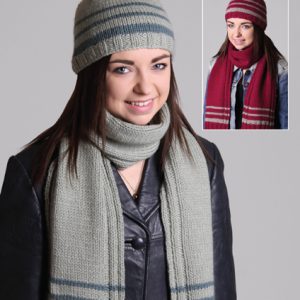 Pattern - 12ply Yarn - Striped Beanie and Scarf
Pattern - 12ply Yarn - Striped Beanie and Scarf 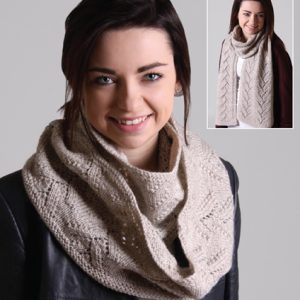 Pattern - 8ply - Lace Cowl and Scarf
Pattern - 8ply - Lace Cowl and Scarf 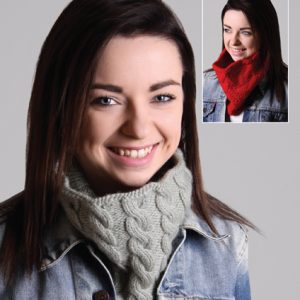 Pattern - 12ply Yarn - Lace and Cable Cowls
Pattern - 12ply Yarn - Lace and Cable Cowls 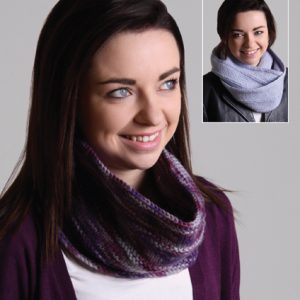 Pattern - 8ply and 12ply Yarn - Plain Cowls
Pattern - 8ply and 12ply Yarn - Plain Cowls 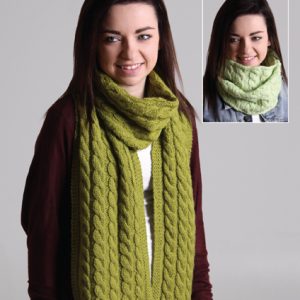 Pattern - 8ply Yarn - Cable Cowl and Scarf
Pattern - 8ply Yarn - Cable Cowl and Scarf 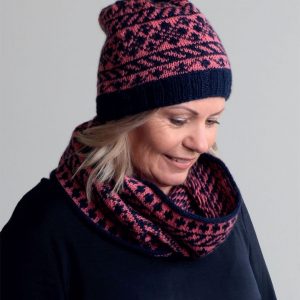 Pattern - Fair Isle Hat and Cowl
Pattern - Fair Isle Hat and Cowl 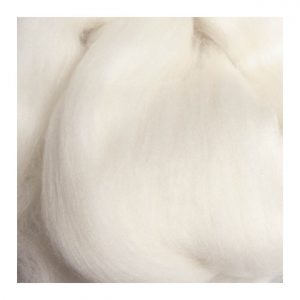 White Merino Sliver - 100gm Bag (19 micron )
White Merino Sliver - 100gm Bag (19 micron ) 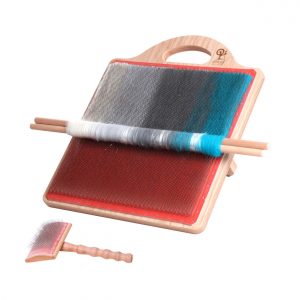 Blending Board 108 PPSI
Blending Board 108 PPSI 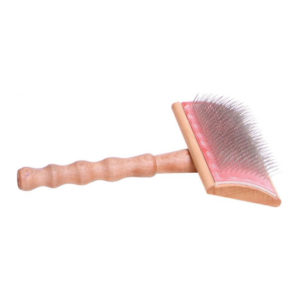 Blending Board Brush Lacquered
Blending Board Brush Lacquered 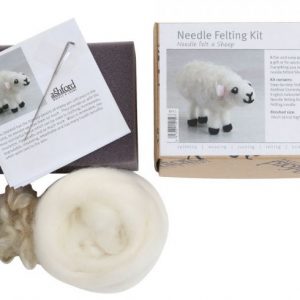 Needle Felting Kit - Sheep
Needle Felting Kit - Sheep 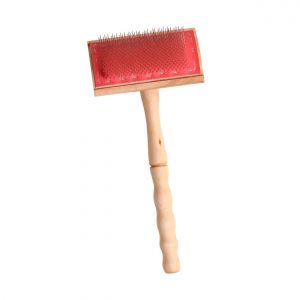 Flick Carder 72 PPSI - long handle
Flick Carder 72 PPSI - long handle 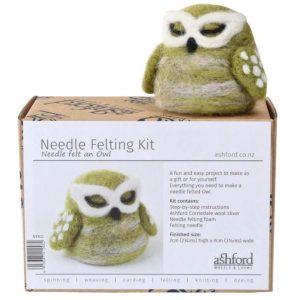 Needle Felting Kit - Owl
Needle Felting Kit - Owl 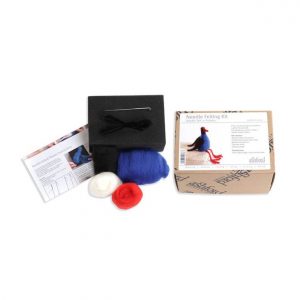 Needle Felting Kit - Pauly the Pukeko
Needle Felting Kit - Pauly the Pukeko 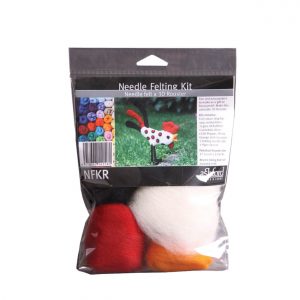 Needle Felting Kit - Rooster
Needle Felting Kit - Rooster 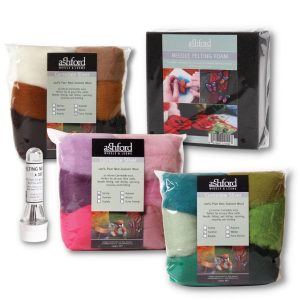 Needle Felting Refill Kit
Needle Felting Refill Kit 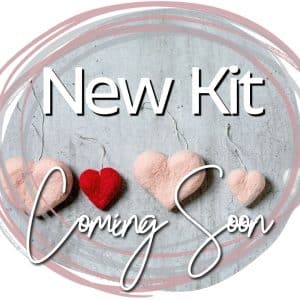 Needle Felting Kit - Penny the Platypus
Needle Felting Kit - Penny the Platypus 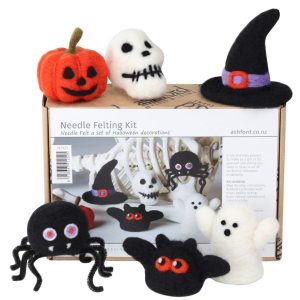 Needle Felting Kit - Halloween
Needle Felting Kit - Halloween 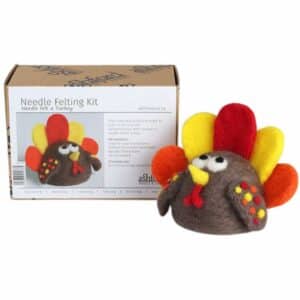 Needle Felting Kit - Turkey
Needle Felting Kit - Turkey 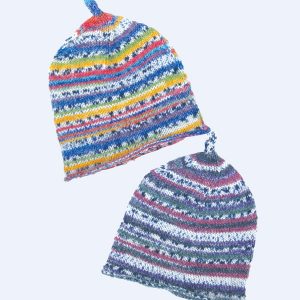 Pattern - Opal Yarn - Pixie Hat
Pattern - Opal Yarn - Pixie Hat 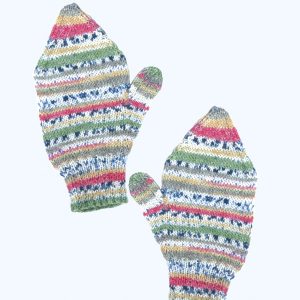 Pattern - Opal Yarn - Mittens
Pattern - Opal Yarn - Mittens 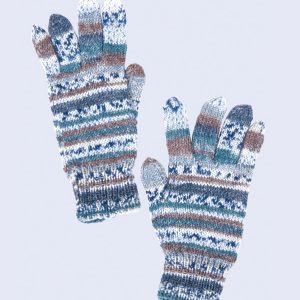 Pattern - Opal Yarn - Gloves
Pattern - Opal Yarn - Gloves 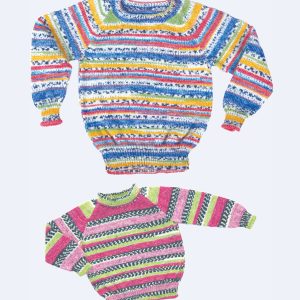 Pattern - Opal Yarn - Baby Jersey
Pattern - Opal Yarn - Baby Jersey 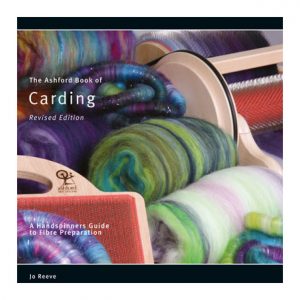 Ashford Book of Carding - Jo Reeve - English
Ashford Book of Carding - Jo Reeve - English 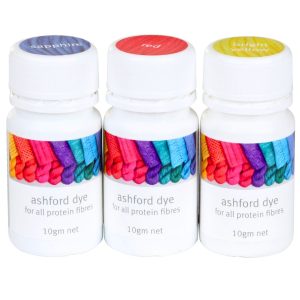 Ashford Protein & Wool Dye - Primary Colours Collection
Ashford Protein & Wool Dye - Primary Colours Collection 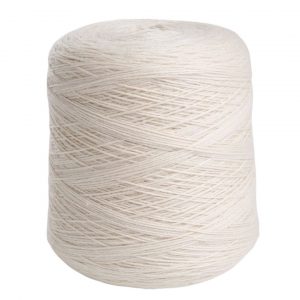 Ashford 100% NZ Wool Double Knit Cone
Ashford 100% NZ Wool Double Knit Cone 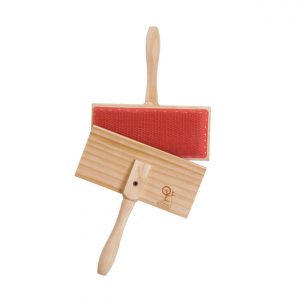 Ashford Small Handcarders
Ashford Small Handcarders 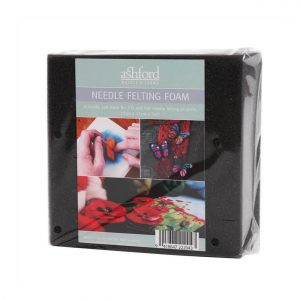 Needle Felting Foam
Needle Felting Foam 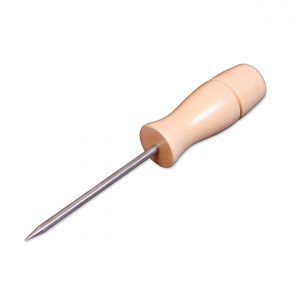 Awl - Doffer for All Ashford Drum Carders
Awl - Doffer for All Ashford Drum Carders 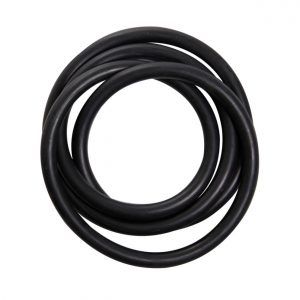 Drive Band for Drum Carders - 976 x 6mm Polycord
Drive Band for Drum Carders - 976 x 6mm Polycord 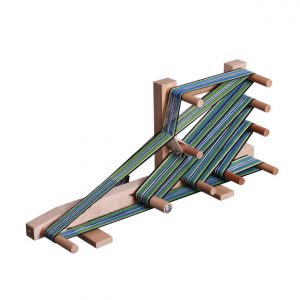 Inkle Loom includes Shuttle and clamp - warp 2.8m / 110"
Inkle Loom includes Shuttle and clamp - warp 2.8m / 110" 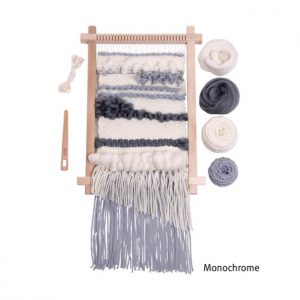 Weaving Starter Kit Monochrome
Weaving Starter Kit Monochrome 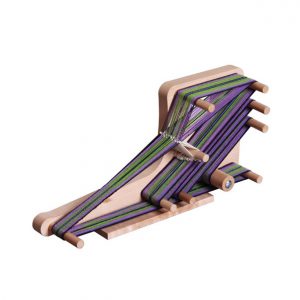 Inklette Loom includes Shuttle - warp 1.8m / 72"
Inklette Loom includes Shuttle - warp 1.8m / 72" 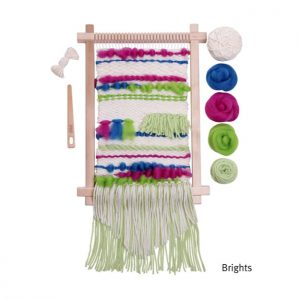 Weaving Starter Kit Brights
Weaving Starter Kit Brights 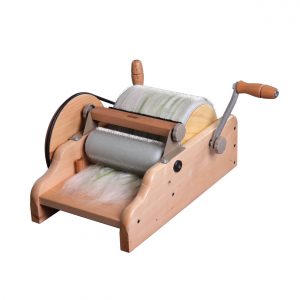 Ashford Drum Carder Super Fine - 120 PPSI - 20cm / 8" Width
Ashford Drum Carder Super Fine - 120 PPSI - 20cm / 8" Width 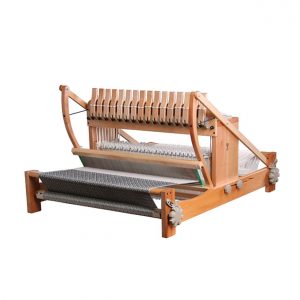 Sixteen Shaft 61cm / 24" Table Loom
Sixteen Shaft 61cm / 24" Table Loom 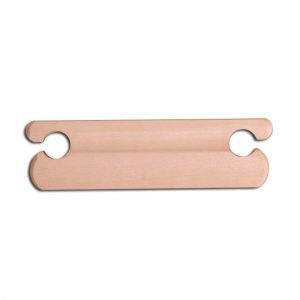 Belt Shuttle for Inkle Loom - 18cm / 7"
Belt Shuttle for Inkle Loom - 18cm / 7" 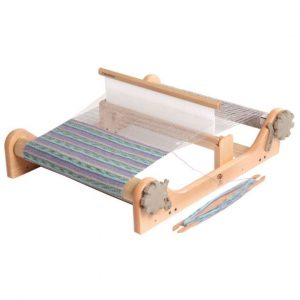 Ashford 60cm Rigid Heddle Loom
Ashford 60cm Rigid Heddle Loom 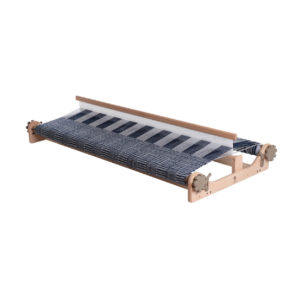 120cm Rigid Heddle Loom - includes second heddle kit
120cm Rigid Heddle Loom - includes second heddle kit 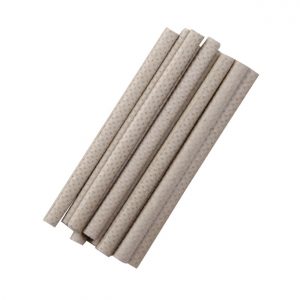 Paper Bobbins for Boat Shuttles - Packaged 10pc
Paper Bobbins for Boat Shuttles - Packaged 10pc 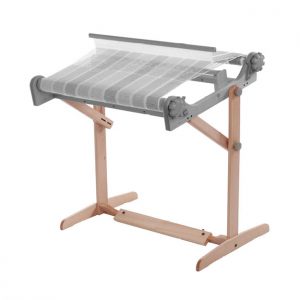 Rigid Heddle Loom Stand for 120cm
Rigid Heddle Loom Stand for 120cm 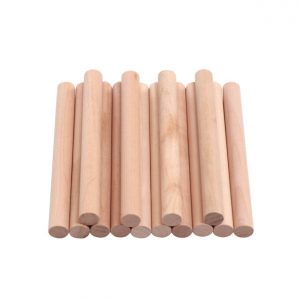 Rigid Heddle Warp Pegs - Packaged 14pc
Rigid Heddle Warp Pegs - Packaged 14pc 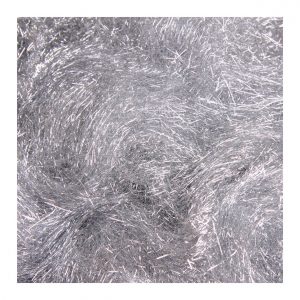 Angelina Fibre Silver - 10gm Bag
Angelina Fibre Silver - 10gm Bag 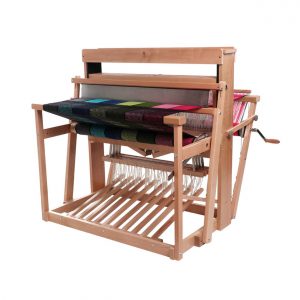 Jack Loom Eight Shaft 97cm / 38" Floor Loom
Jack Loom Eight Shaft 97cm / 38" Floor Loom 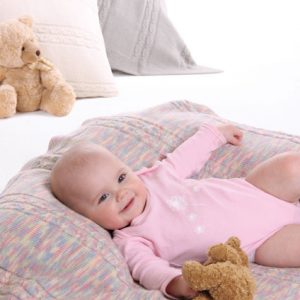 Pattern - Mackenzie Yarn - Cable Blanket
Pattern - Mackenzie Yarn - Cable Blanket 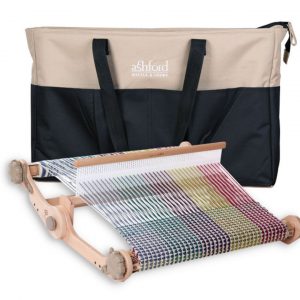 50cm Knitters Loom with carry bag - includes second heddle kit
50cm Knitters Loom with carry bag - includes second heddle kit 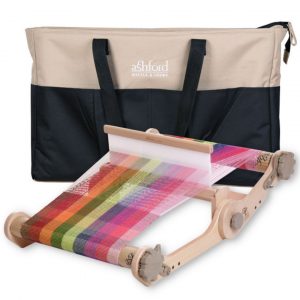 30cm Knitters Loom with carry bag - includes second heddle kit
30cm Knitters Loom with carry bag - includes second heddle kit 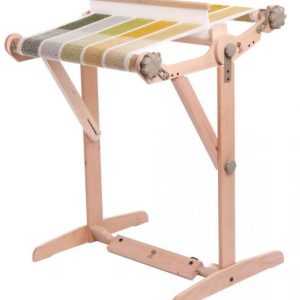 Knitters Loom Stand
Knitters Loom Stand 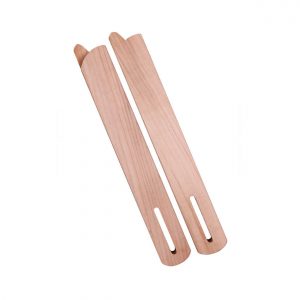 Knitters Loom Stand Support Brace Kit
Knitters Loom Stand Support Brace Kit 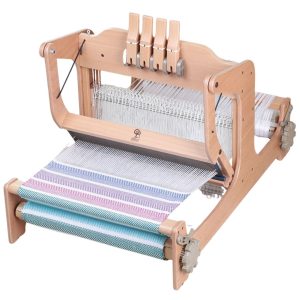 Brooklyn Four Shaft Weaving Loom
Brooklyn Four Shaft Weaving Loom 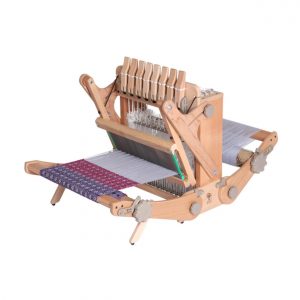 Katie Eight Shaft 30cm Table Loom with Carry Bag
Katie Eight Shaft 30cm Table Loom with Carry Bag 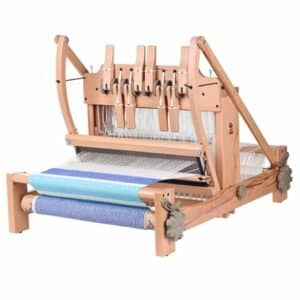 Ashford Eight Shaft Table Loom - 60cm(24") with shuttle race
Ashford Eight Shaft Table Loom - 60cm(24") with shuttle race 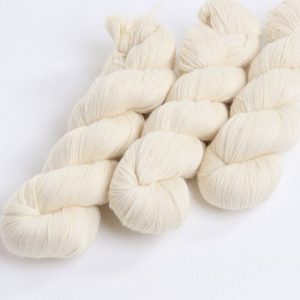 Sock Yarn
Sock Yarn 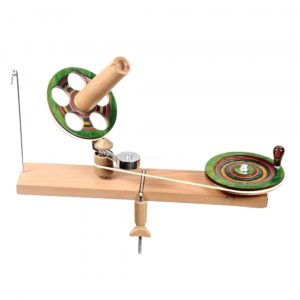 Signature Ball Winder
Signature Ball Winder 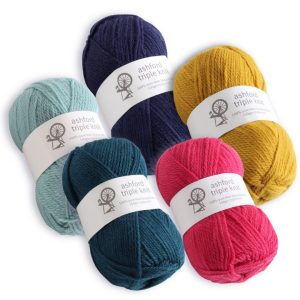 Triple Knit Yarn Packs - 500gm Multicolour Bright & Bold
Triple Knit Yarn Packs - 500gm Multicolour Bright & Bold 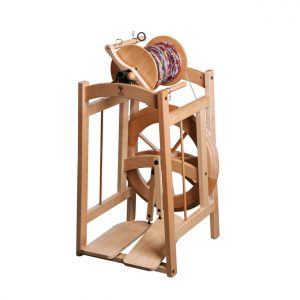 Country Spinner 2 Double Treadle - Ashford - Lacquered
Country Spinner 2 Double Treadle - Ashford - Lacquered 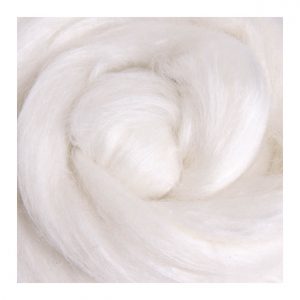 20% White Silk / 30% Alpaca / 50% Merino Blend Sliver / kg
20% White Silk / 30% Alpaca / 50% Merino Blend Sliver / kg 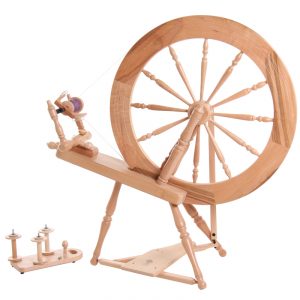 Elizabeth 30" Spinning Wheel - Ashford
Elizabeth 30" Spinning Wheel - Ashford 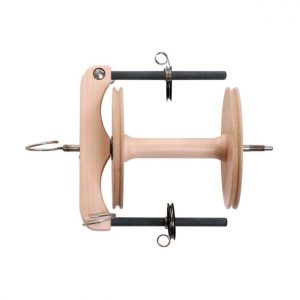 Sliding Hook Flyer Joy Freedom Kit with Jumbo bobbin Lacquered
Sliding Hook Flyer Joy Freedom Kit with Jumbo bobbin Lacquered 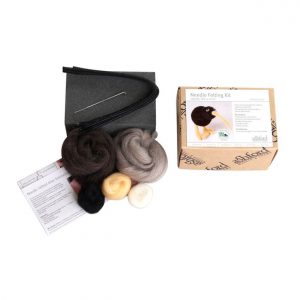 Needle Felting Kit - Kelvin the Kiwi
Needle Felting Kit - Kelvin the Kiwi 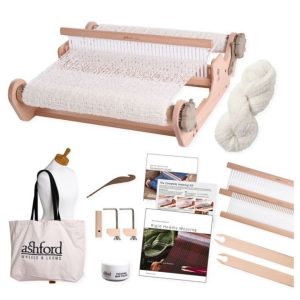 The Ashford Complete SampleIt Weaving Kit
The Ashford Complete SampleIt Weaving Kit 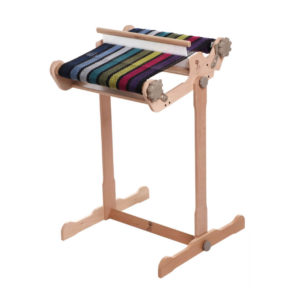 SampleIt Loom Stand - Variable Size
SampleIt Loom Stand - Variable Size 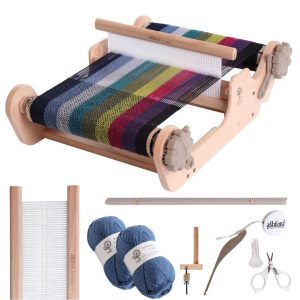 SampleIt Loom Complete Kit - 25cm
SampleIt Loom Complete Kit - 25cm 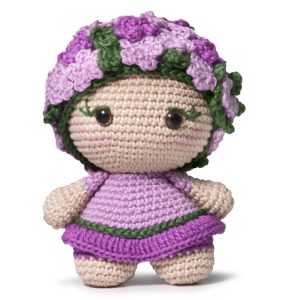 Too Cute Violet Amigurumi Crochet Kit
Too Cute Violet Amigurumi Crochet Kit 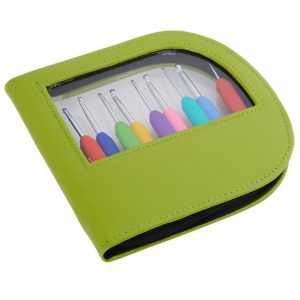 Crochet Hook Set - KnitPro Wave - Green
Crochet Hook Set - KnitPro Wave - Green 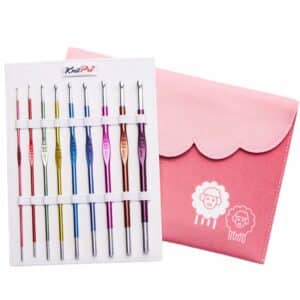 Crochet Hook Set- Zing Single Ended
Crochet Hook Set- Zing Single Ended 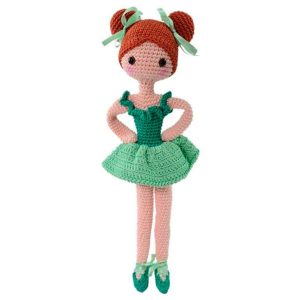 Mary-Claire Ballet Dancer - Amigurumi Crochet Kit
Mary-Claire Ballet Dancer - Amigurumi Crochet Kit 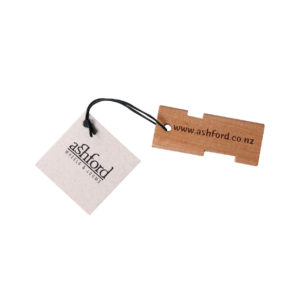 Yarn Gauge
Yarn Gauge 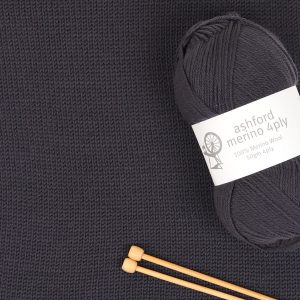 Ashford Merino 4Ply Yarn - Shadow
Ashford Merino 4Ply Yarn - Shadow 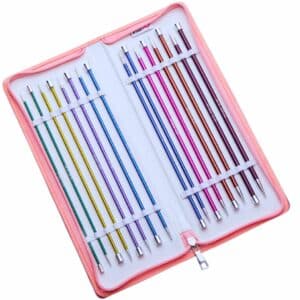 35cm Knitting Needles Set - Zing Metal
35cm Knitting Needles Set - Zing Metal 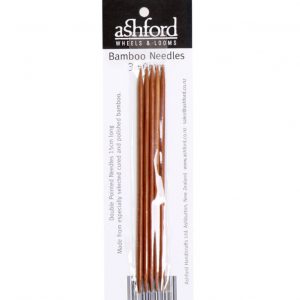 Ashford Bamboo Double Pointed Knitting Needles - 3.5
Ashford Bamboo Double Pointed Knitting Needles - 3.5 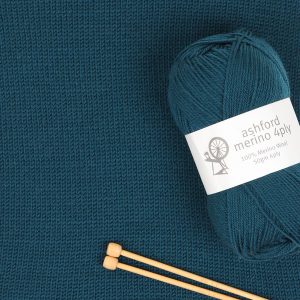 Ashford Merino 4Ply Yarn - Peacock
Ashford Merino 4Ply Yarn - Peacock 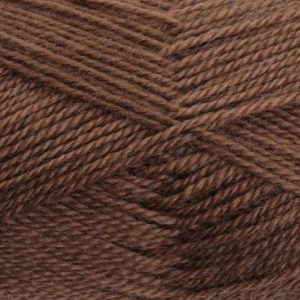 Double Knit Yarn - 100gm - Coral
Double Knit Yarn - 100gm - Coral 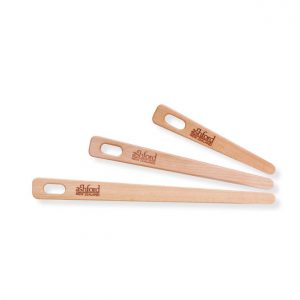 Weaving Needles - Packaged 3pc
Weaving Needles - Packaged 3pc 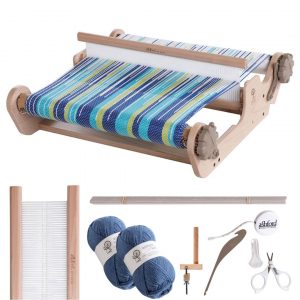 SampleIt Loom Complete Kit - 40cm
SampleIt Loom Complete Kit - 40cm 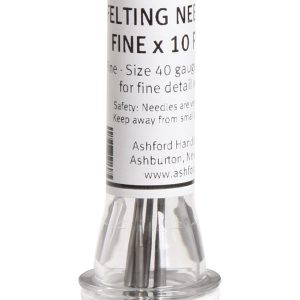 Felting Needles - pack of 10 - Fine 40 Gauge
Felting Needles - pack of 10 - Fine 40 Gauge 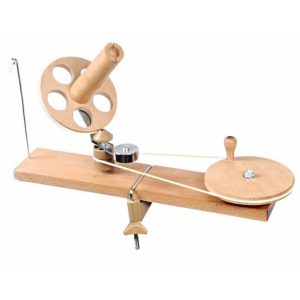 Ball Winder - Natural
Ball Winder - Natural 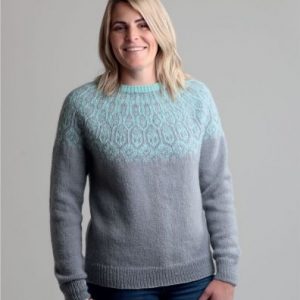 Pattern - Ashford DK Yarn - Fair Isle Yoke Sweater
Pattern - Ashford DK Yarn - Fair Isle Yoke Sweater 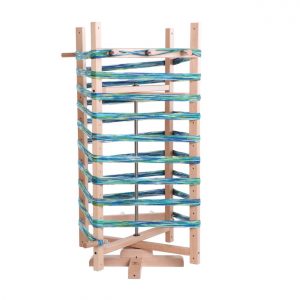 Warping Mill - 15m / 50'
Warping Mill - 15m / 50' 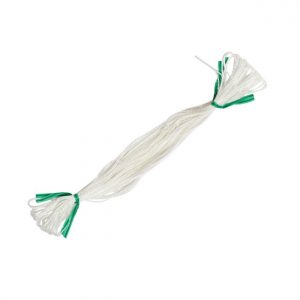 Texsolv Heddles Green 22cm / 8.6" - all Ashford Table Looms - 320 Pieces
Texsolv Heddles Green 22cm / 8.6" - all Ashford Table Looms - 320 Pieces 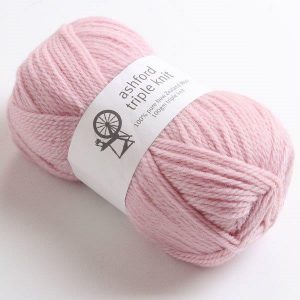 Ashford Triple Knit 12Ply Yarn - Ballet
Ashford Triple Knit 12Ply Yarn - Ballet 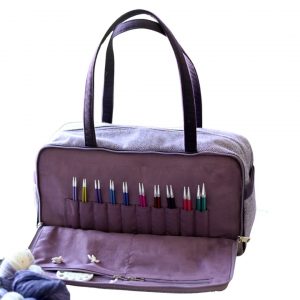 Knitting Bag - Duffle Style - Snug
Knitting Bag - Duffle Style - Snug 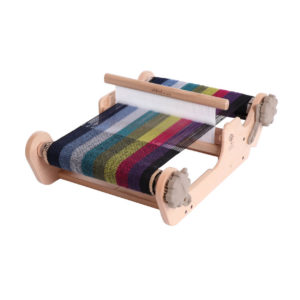 25cm SampleIt Loom with built-in second heddle kit
25cm SampleIt Loom with built-in second heddle kit 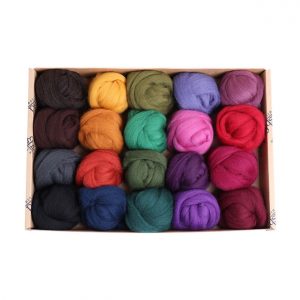 Corriedale Sliver Sample Pack 3 - Darks
Corriedale Sliver Sample Pack 3 - Darks 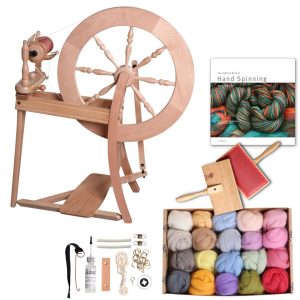 Traditional Spinning Wheel Kit - Ashford
Traditional Spinning Wheel Kit - Ashford 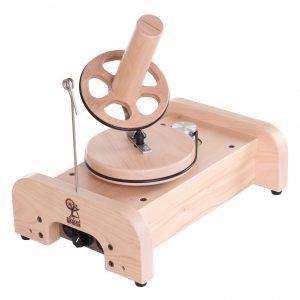 e-Ball Winder
e-Ball Winder 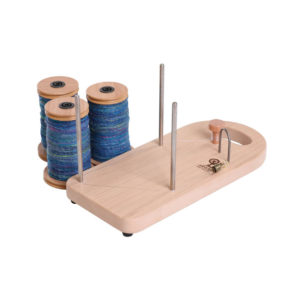 Tensioned Lazy Kate
Tensioned Lazy Kate 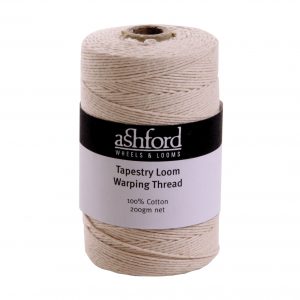 Tapestry Loom Warping Thread 100% cotton - 200gm cones
Tapestry Loom Warping Thread 100% cotton - 200gm cones 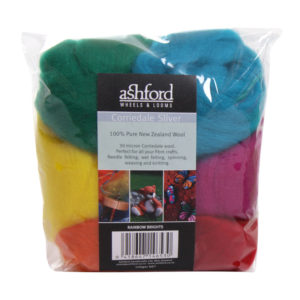 7 Colour Corriedale Wool 100gm Bags - Rainbow Brights
7 Colour Corriedale Wool 100gm Bags - Rainbow Brights 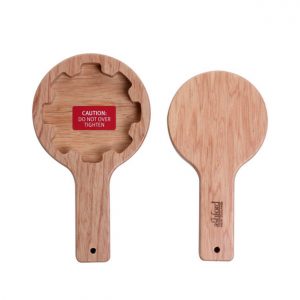 Handi Handles 65cm for KL/KTL/SL
Handi Handles 65cm for KL/KTL/SL 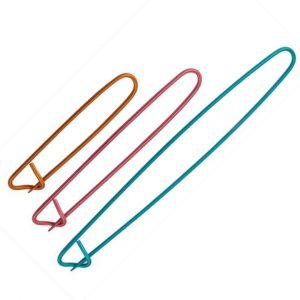 Aluminum Stitch Holder
Aluminum Stitch Holder 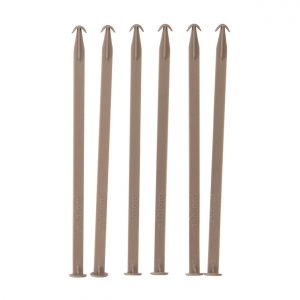 Warp Stick Ties - Packaged 2 sets (12 Ties)
Warp Stick Ties - Packaged 2 sets (12 Ties) 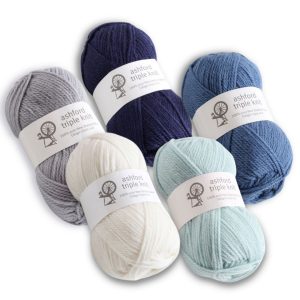 Triple Knit Yarn Packs - 500gm Multicolour Ocean Dreams
Triple Knit Yarn Packs - 500gm Multicolour Ocean Dreams  Stainless Steel Reed 6, 8, 10, 12, 16 DPI (12.5cm / 5" wide - Price per inch - end to end including caps)
Stainless Steel Reed 6, 8, 10, 12, 16 DPI (12.5cm / 5" wide - Price per inch - end to end including caps) 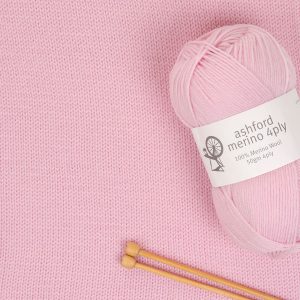 Ashford Merino 4Ply Yarn - Ballet
Ashford Merino 4Ply Yarn - Ballet 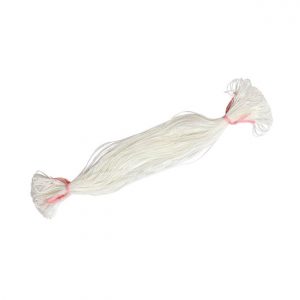 Texsolv Heddles 100 Pink 26.8cm / 10.5" - all Ashford Jack Looms
Texsolv Heddles 100 Pink 26.8cm / 10.5" - all Ashford Jack Looms 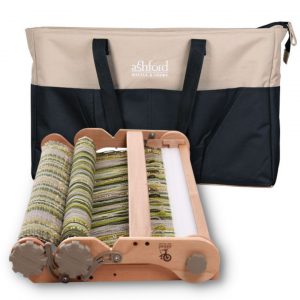 70cm Knitters Loom with carry bag - includes second heddle kit
70cm Knitters Loom with carry bag - includes second heddle kit 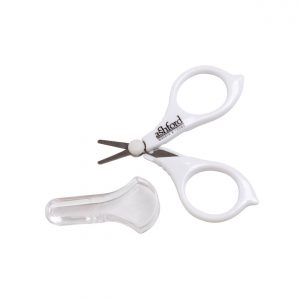 Ashford Little Scissors - 10pc Packaged
Ashford Little Scissors - 10pc Packaged 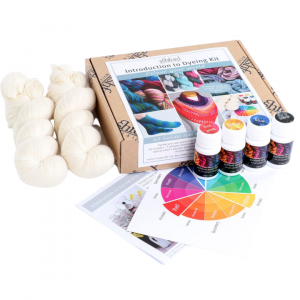 Introduction to Dyeing Kit
Introduction to Dyeing Kit 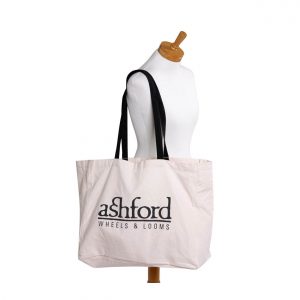 Ashford Canvas Carry Bag
Ashford Canvas Carry Bag 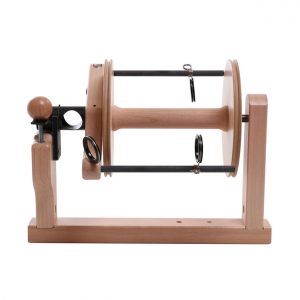 Kiwi Super Flyer Kit with 3 Kiwi Super Flyer Bobbins and Lazy Kate - Lacquered
Kiwi Super Flyer Kit with 3 Kiwi Super Flyer Bobbins and Lazy Kate - Lacquered 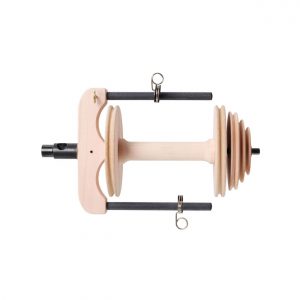 Sliding Hook Flyer Kiwi with Sliding Hook Flyer bobbin
Sliding Hook Flyer Kiwi with Sliding Hook Flyer bobbin 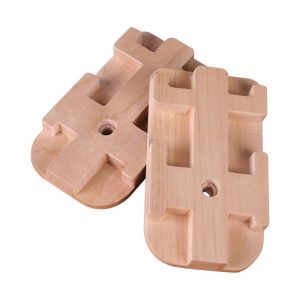 Knitters Loom Second Heddle Kit
Knitters Loom Second Heddle Kit 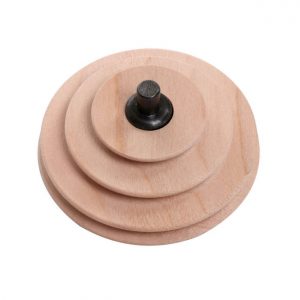 High Speed Double Drive Whorl 3 speed
High Speed Double Drive Whorl 3 speed 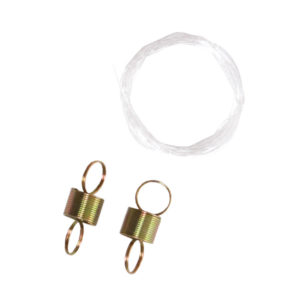 Brake Band Set Small - for Ashford eSpinner
Brake Band Set Small - for Ashford eSpinner 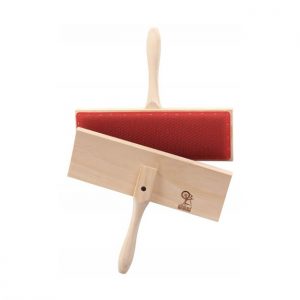 Hand Carder Cotton
Hand Carder Cotton 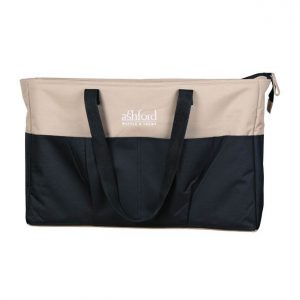 Knitters Loom Carry Bag - 70cm
Knitters Loom Carry Bag - 70cm 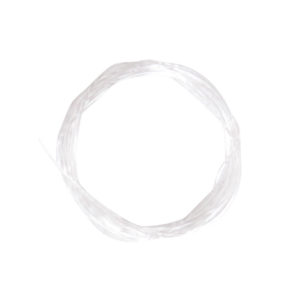 Nylon Brake Band
Nylon Brake Band 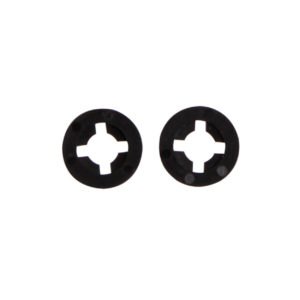 Nylon Retaining Clip
Nylon Retaining Clip 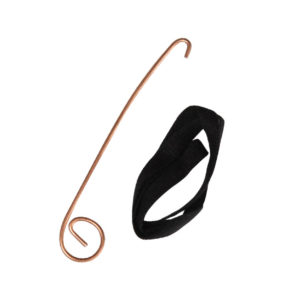 Threading Hook and Tape
Threading Hook and Tape 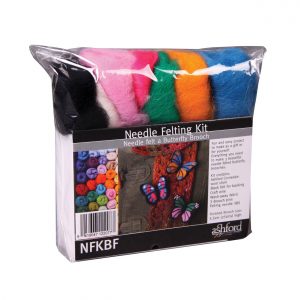 Needle Felting Kit - Butterflies
Needle Felting Kit - Butterflies 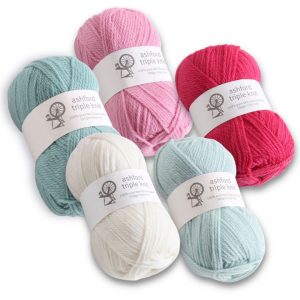 Triple Knit Yarn Packs - 500gm Multicolour Pretty Days
Triple Knit Yarn Packs - 500gm Multicolour Pretty Days 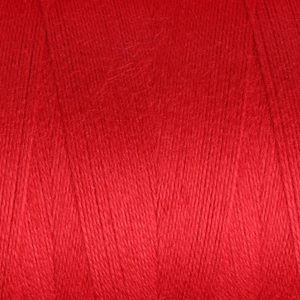 Yoga Yarn 8/2 Core Spun Cotton 200gm cone - Chilli Pepper
Yoga Yarn 8/2 Core Spun Cotton 200gm cone - Chilli Pepper 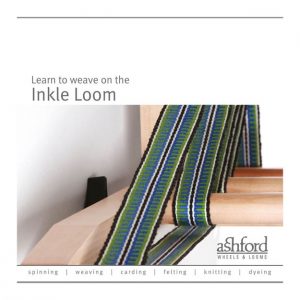 Learn to Weave on the Inkle Loom
Learn to Weave on the Inkle Loom 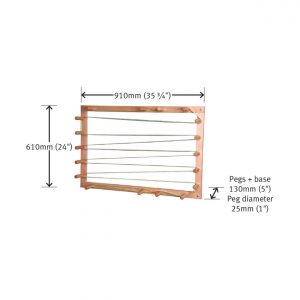 Warping Frame - Large 11m / 37'
Warping Frame - Large 11m / 37' 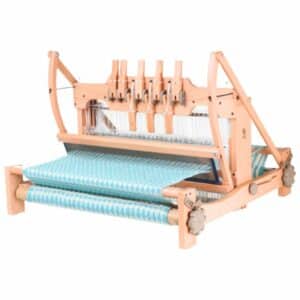 Ashford Eight Shaft Table Loom - 40cm(16") with shuttle race
Ashford Eight Shaft Table Loom - 40cm(16") with shuttle race 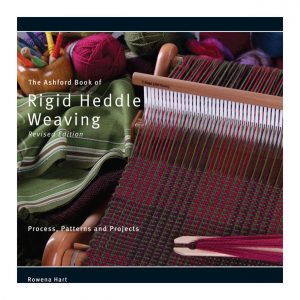 Ashford Book of Rigid Heddle Weaving - Rowena Hart - English
Ashford Book of Rigid Heddle Weaving - Rowena Hart - English 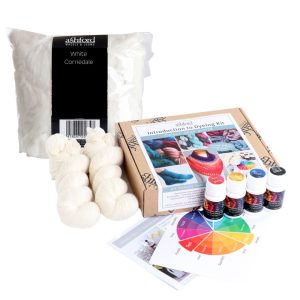 Introduction to Dyeing Gift Pack
Introduction to Dyeing Gift Pack 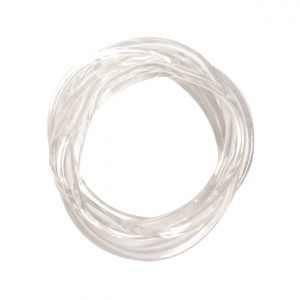 Drive Band for Kiwi Spinning Wheel - 1540 x 3.2mm Polycord
Drive Band for Kiwi Spinning Wheel - 1540 x 3.2mm Polycord  Kiwi High Speed Kit
Kiwi High Speed Kit 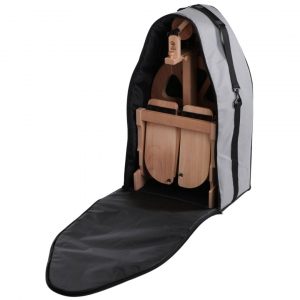 Kiwi 3 Spinning Wheel Carry Bag
Kiwi 3 Spinning Wheel Carry Bag 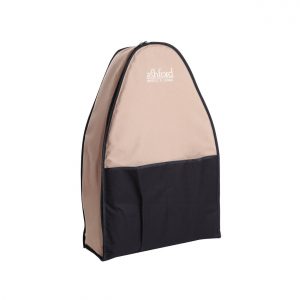 Joy Spinning Wheel Carry Bag
Joy Spinning Wheel Carry Bag 